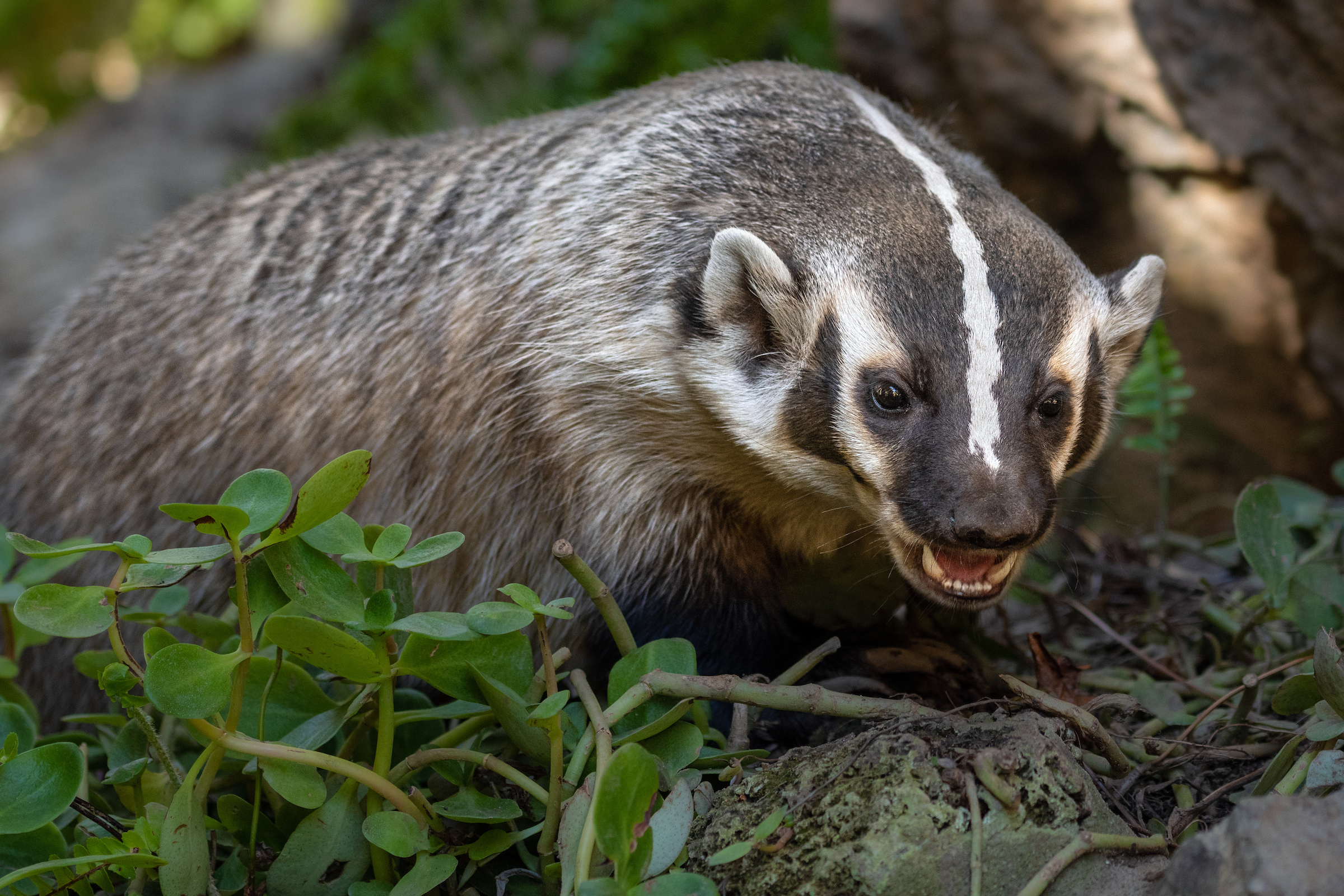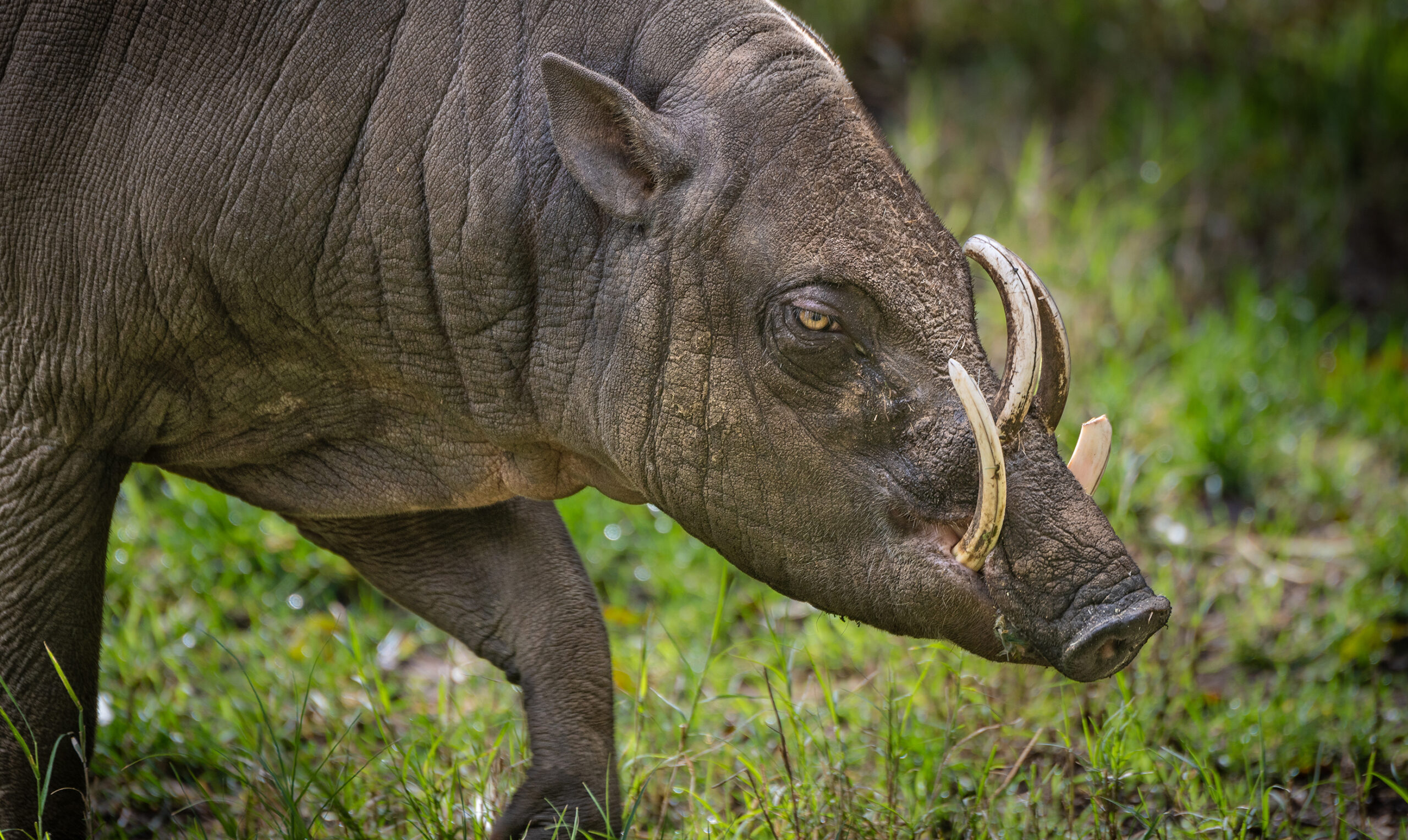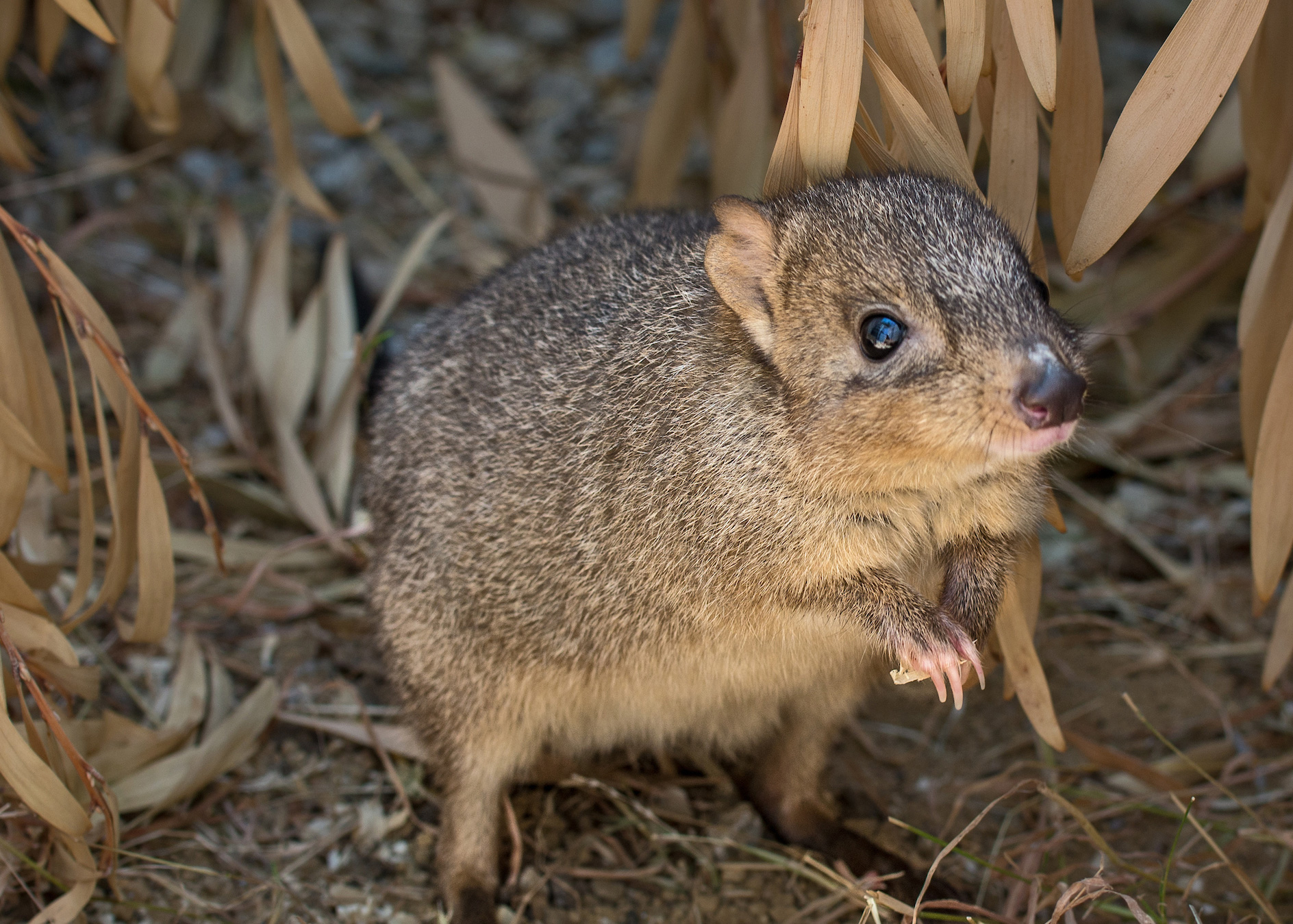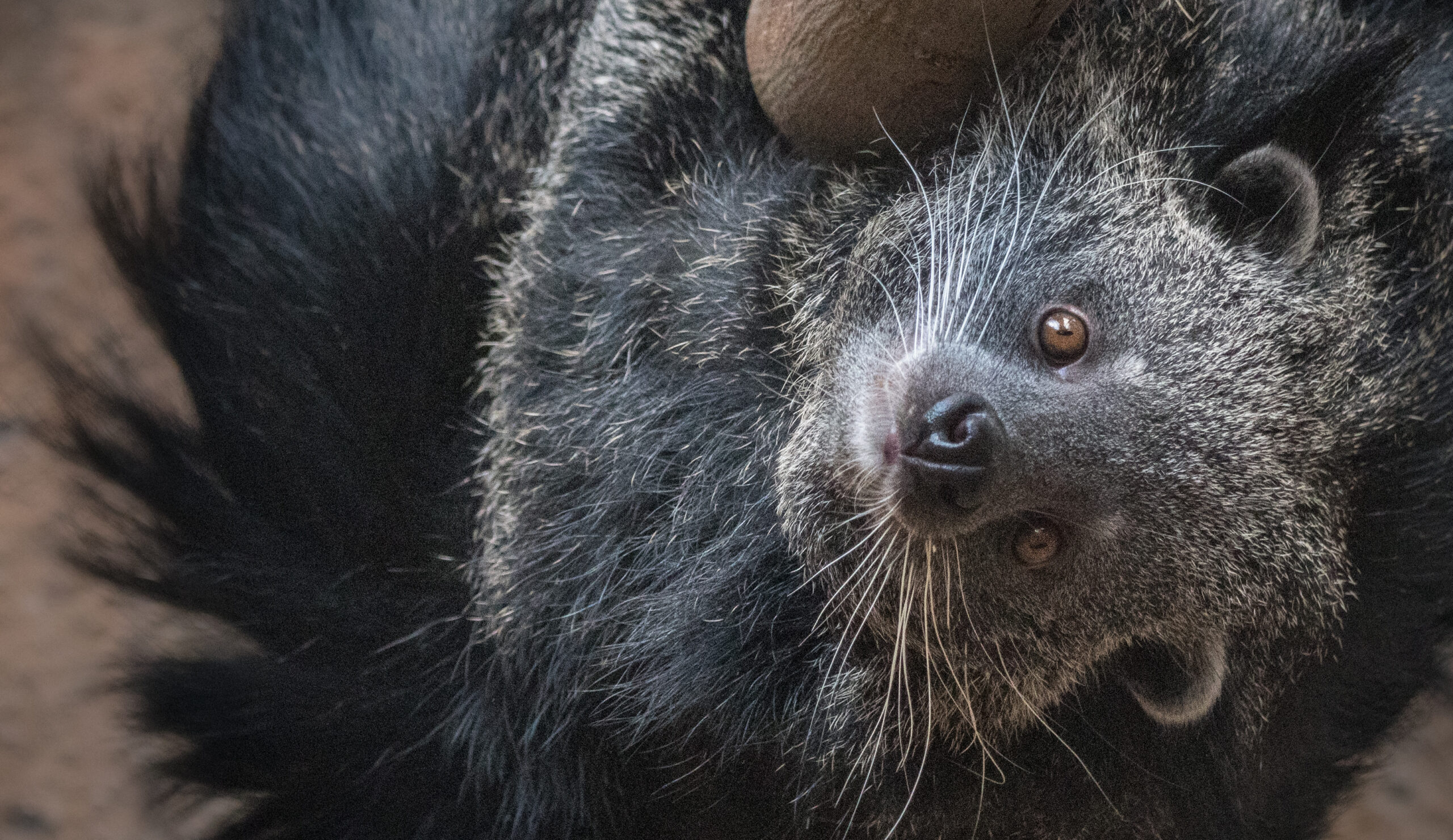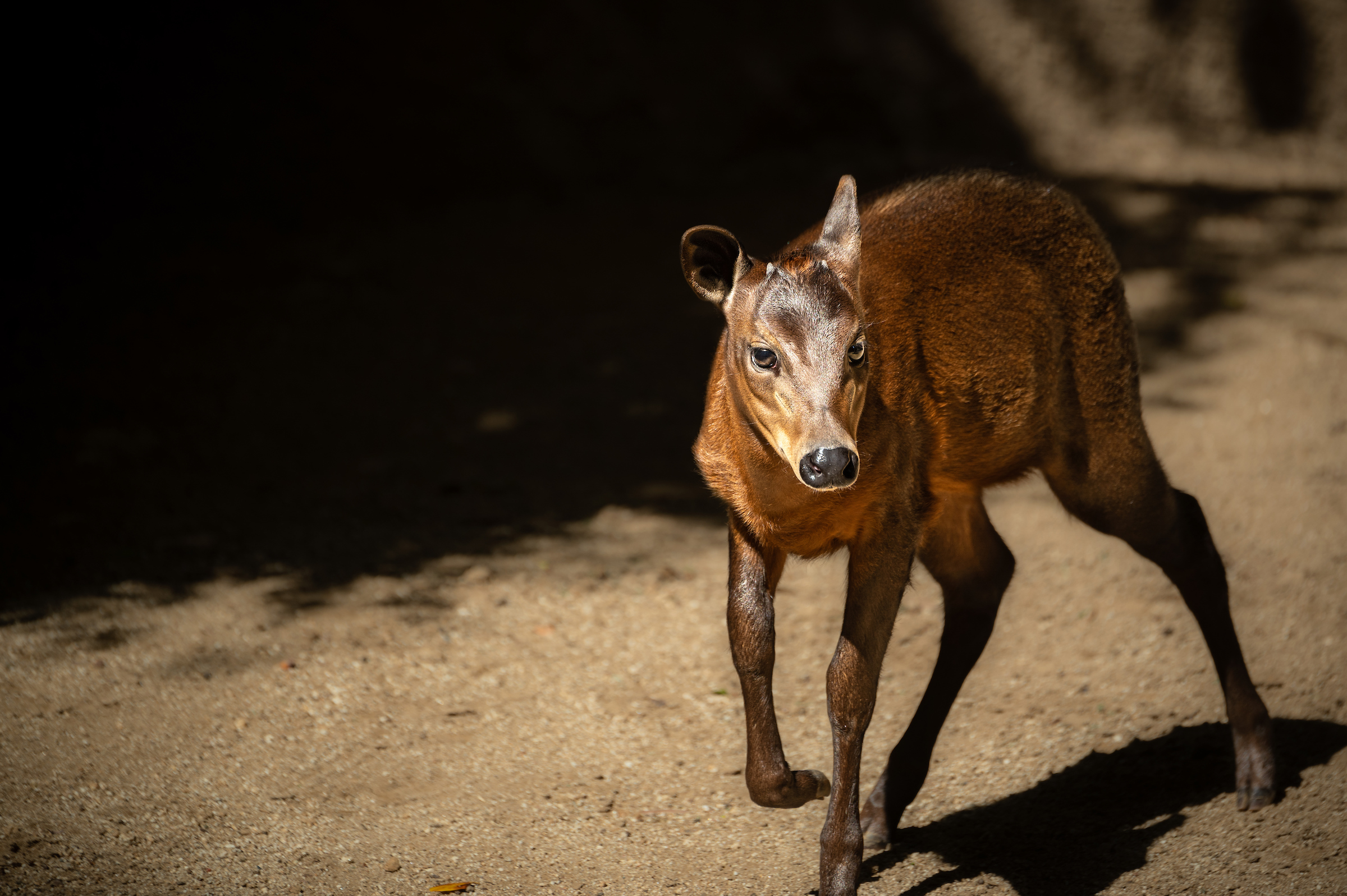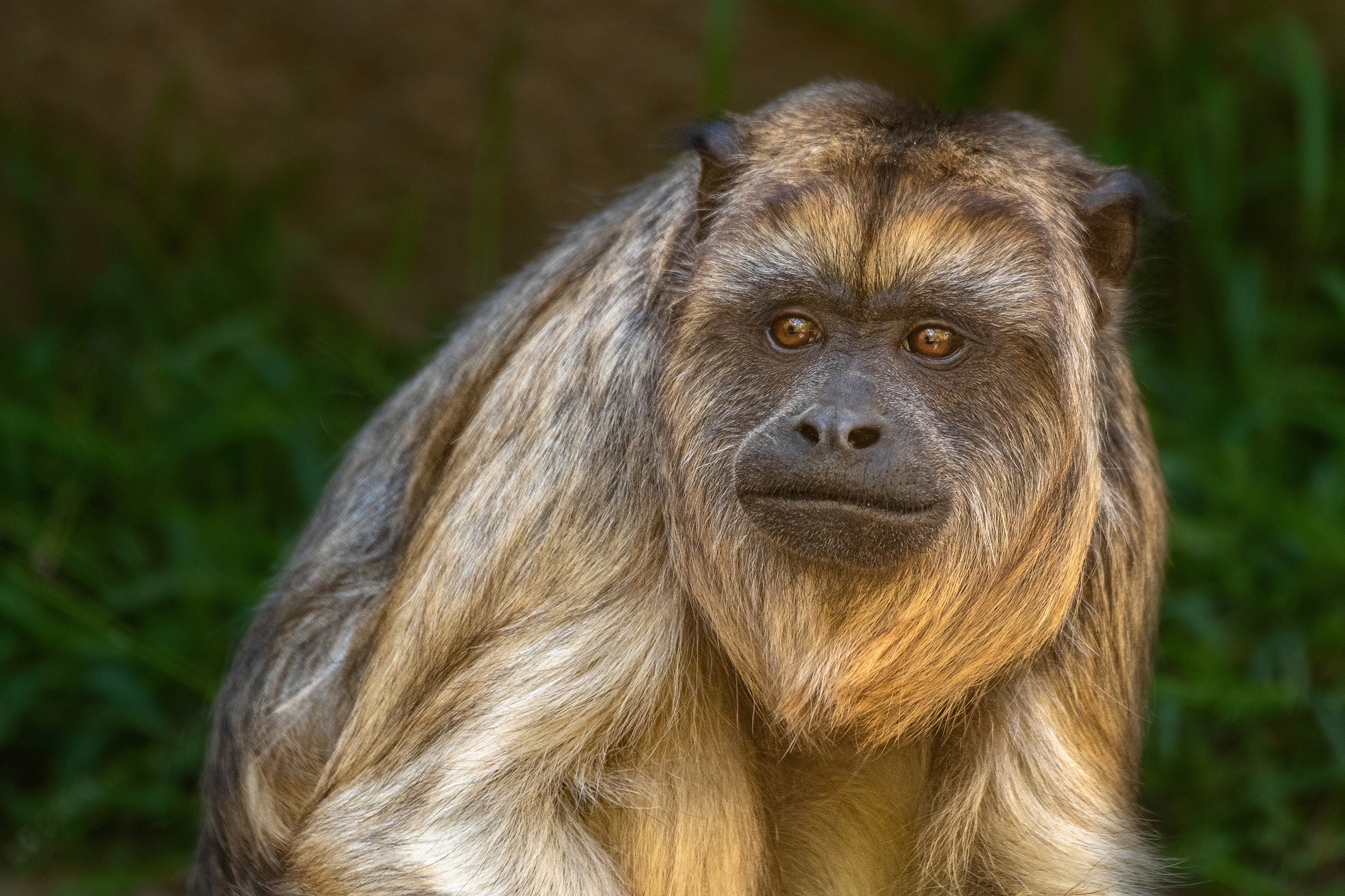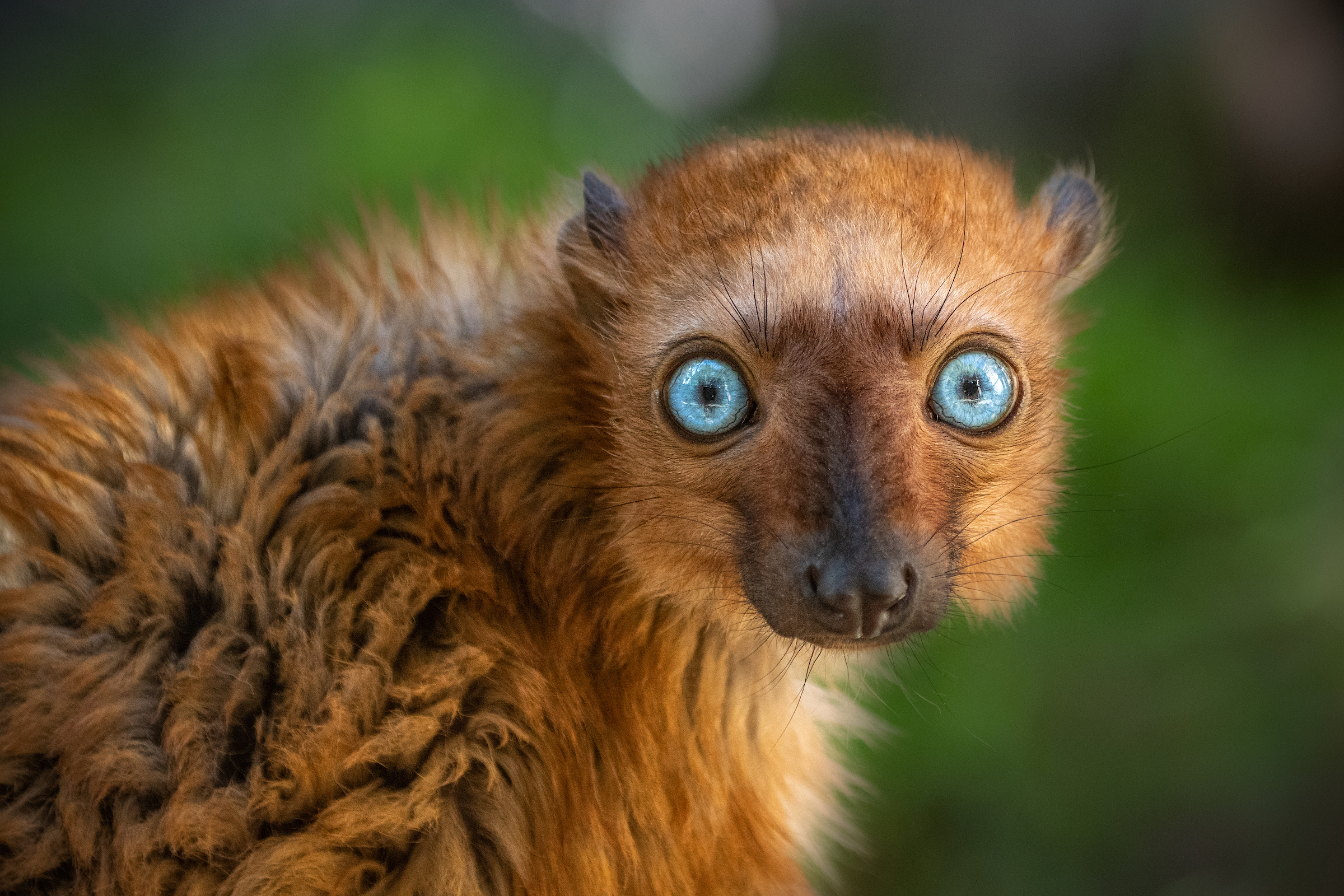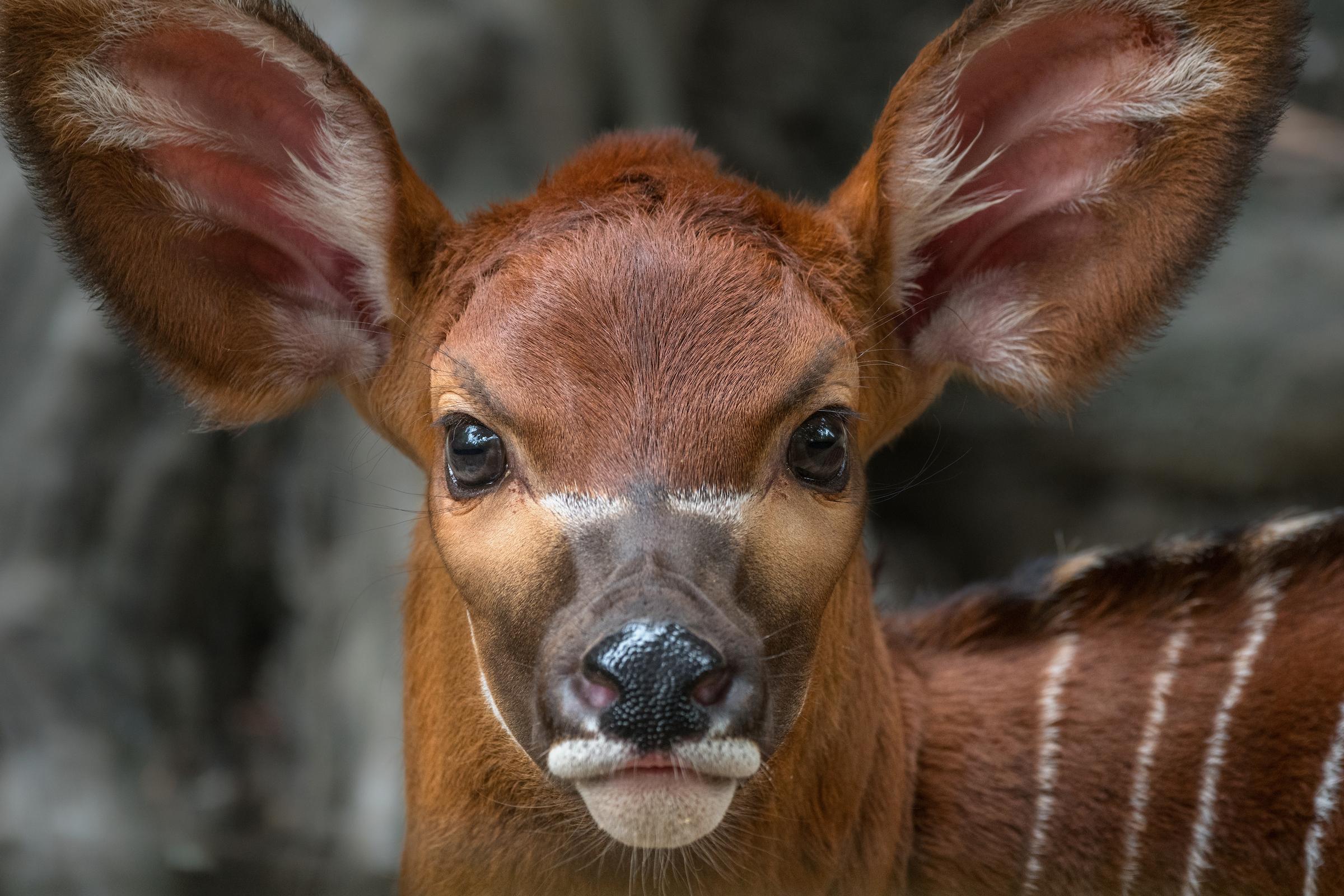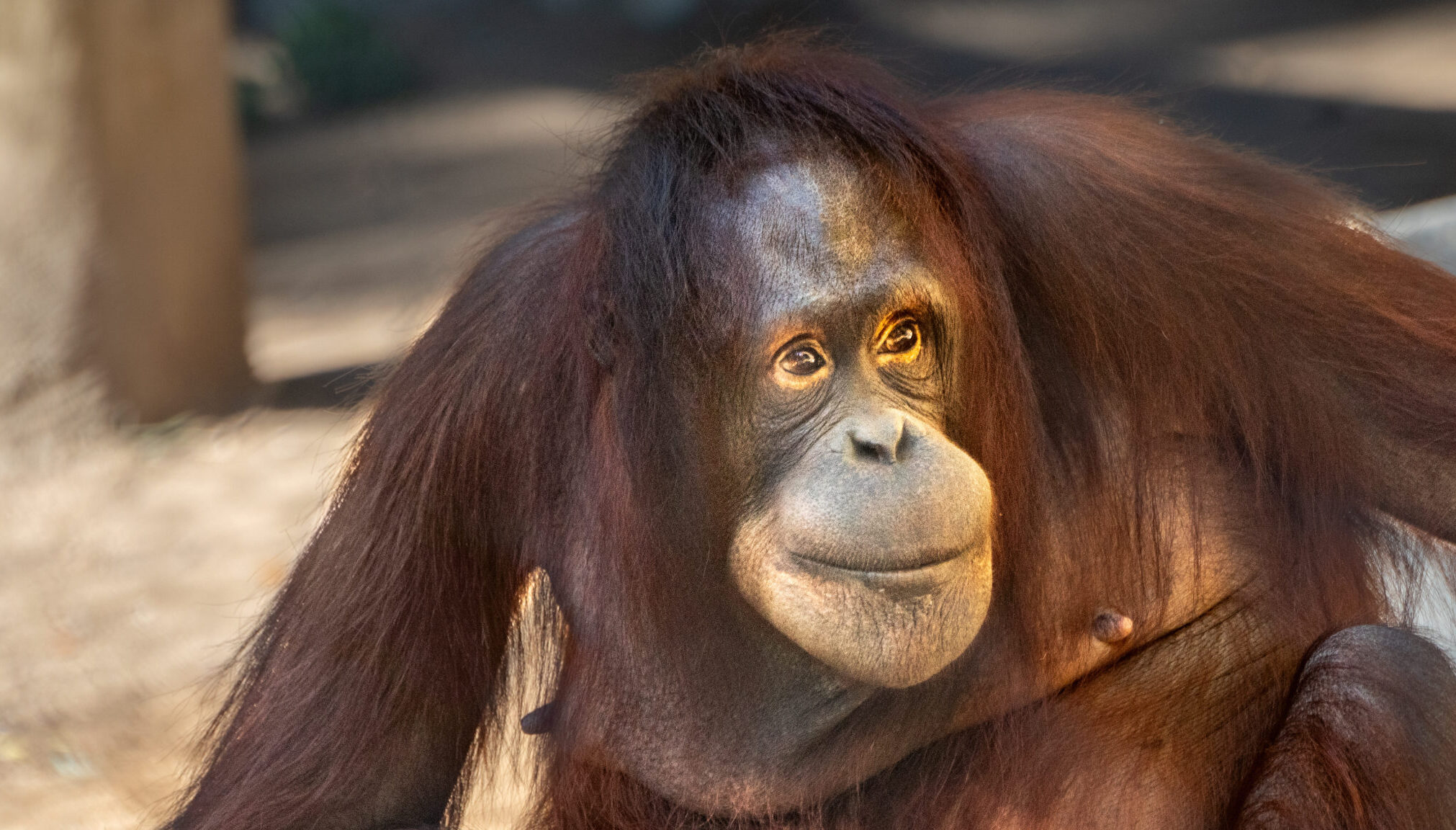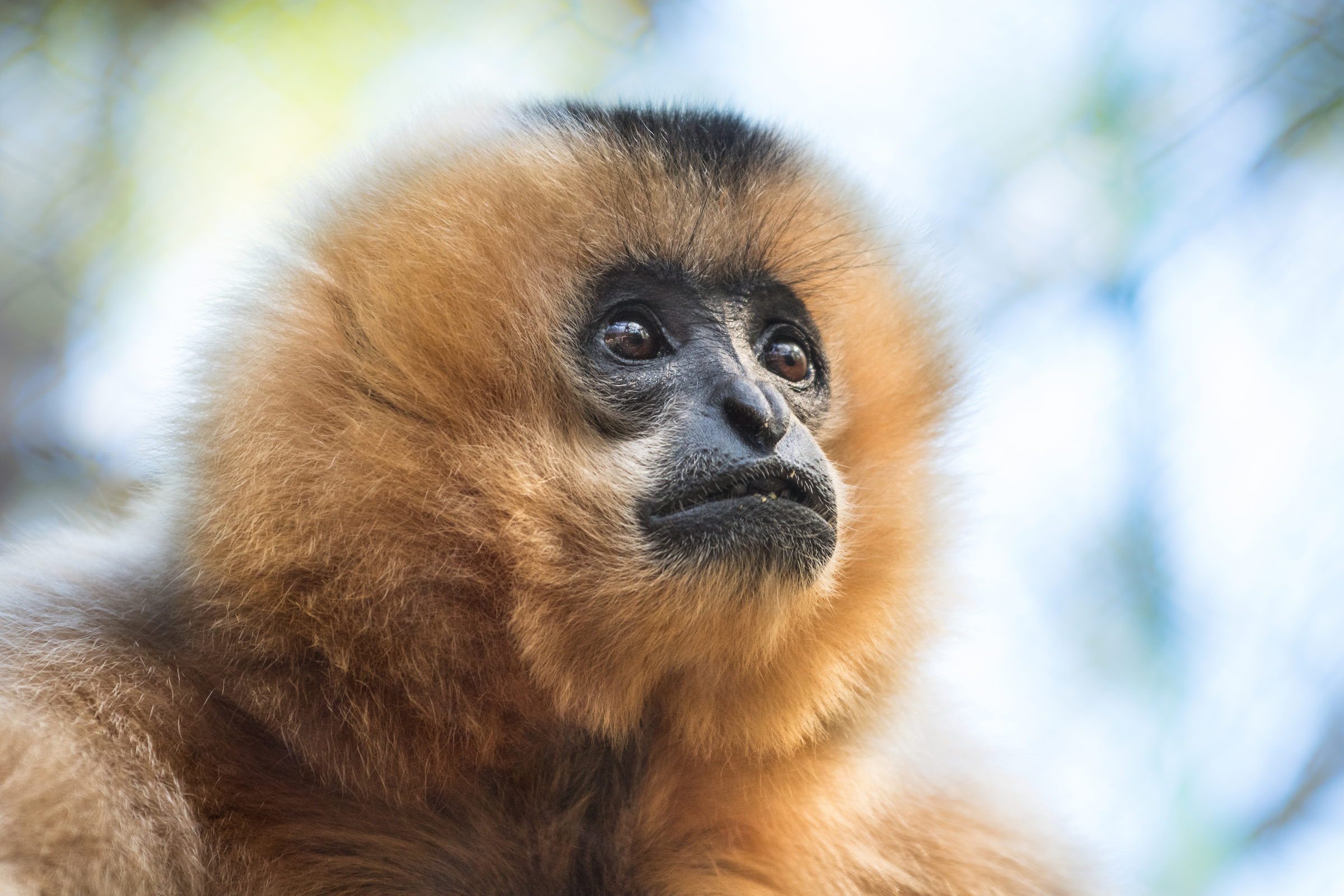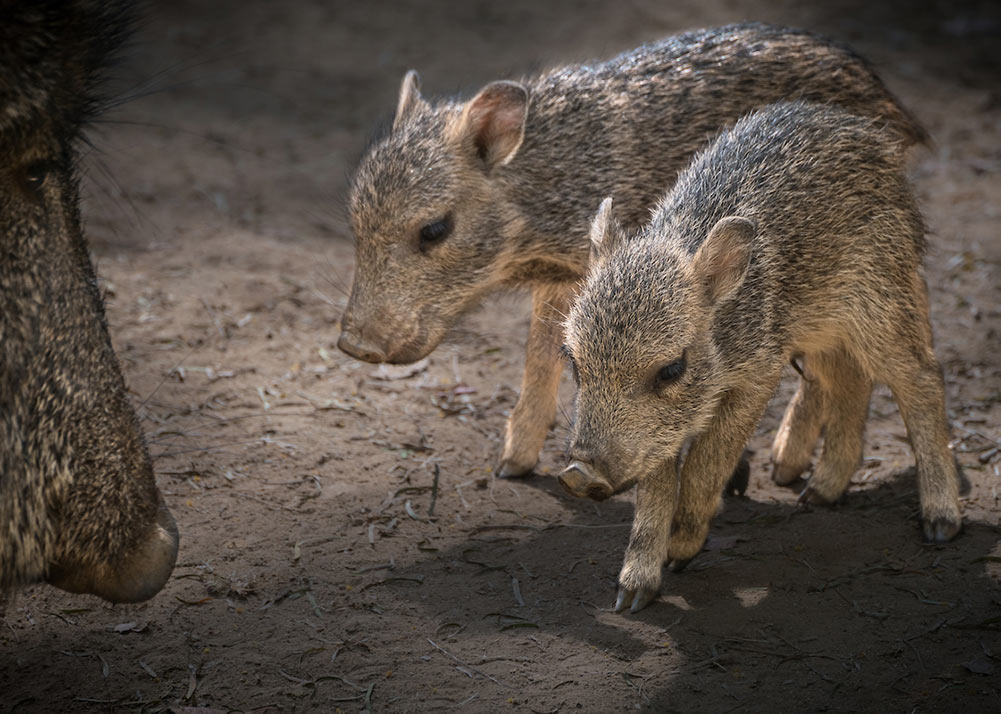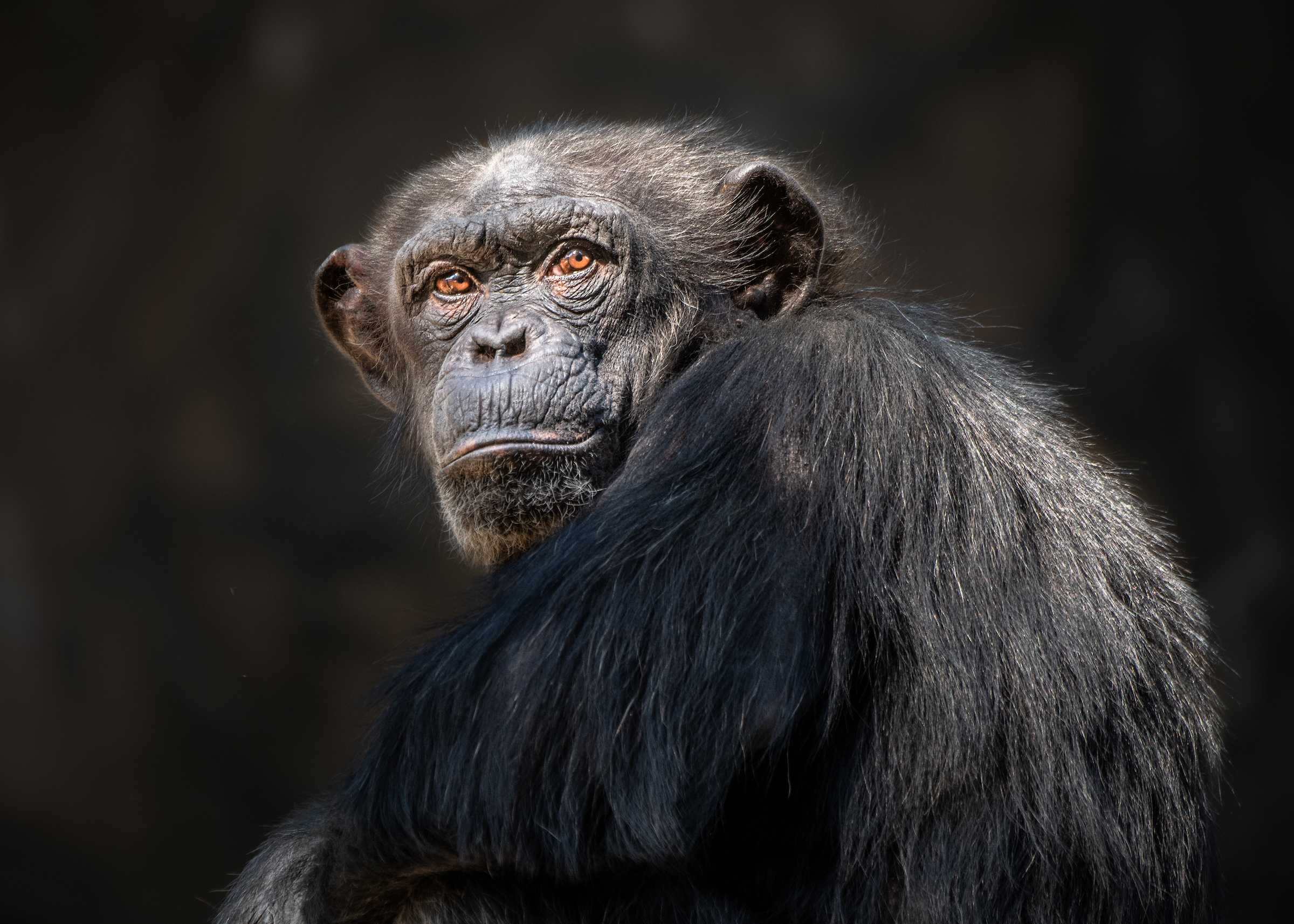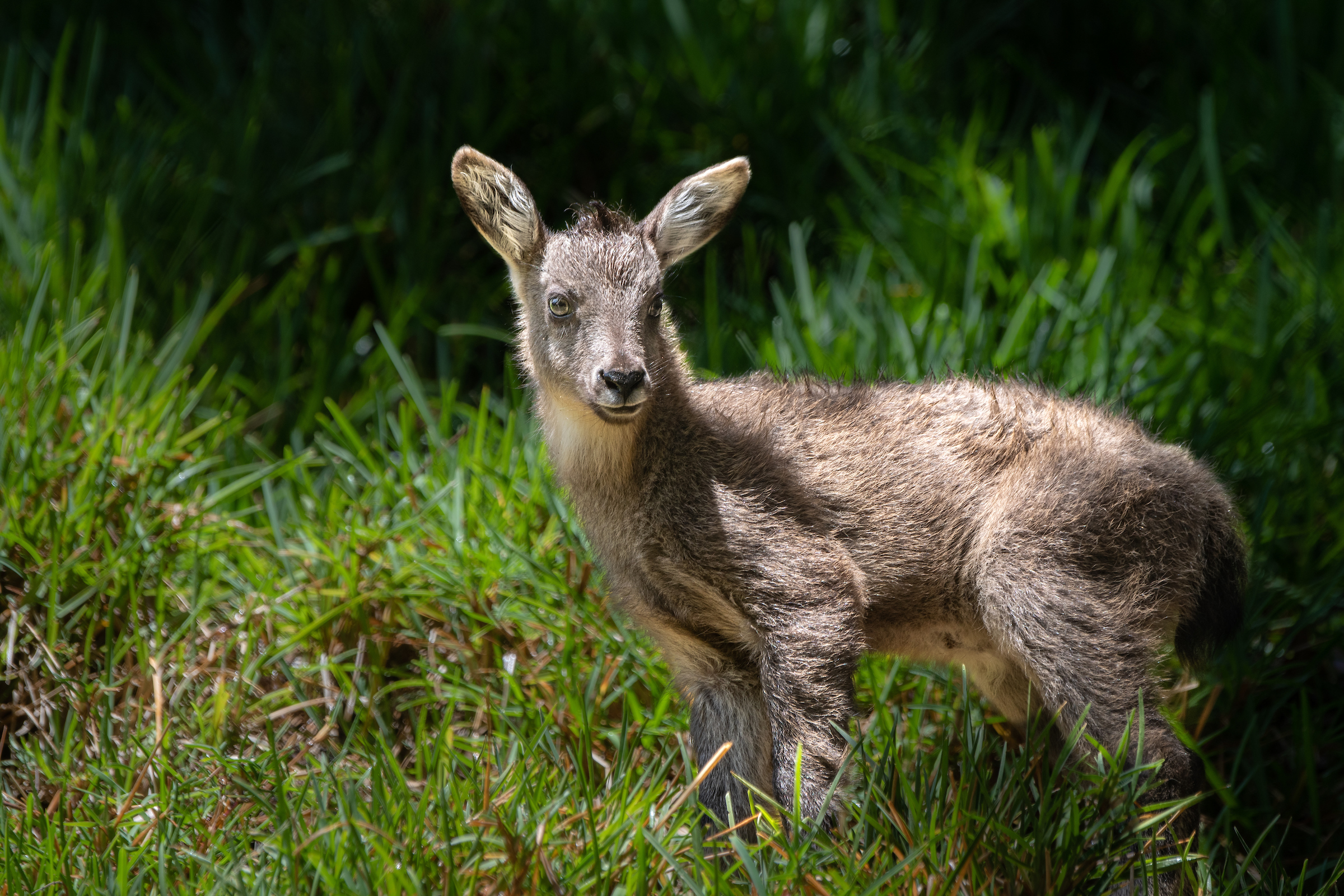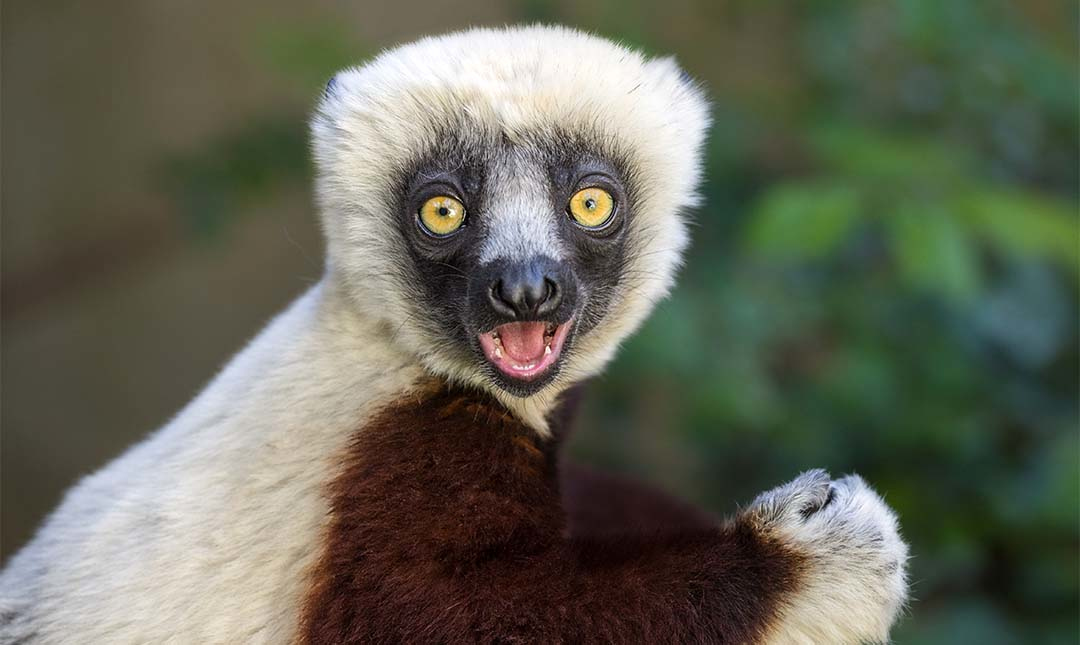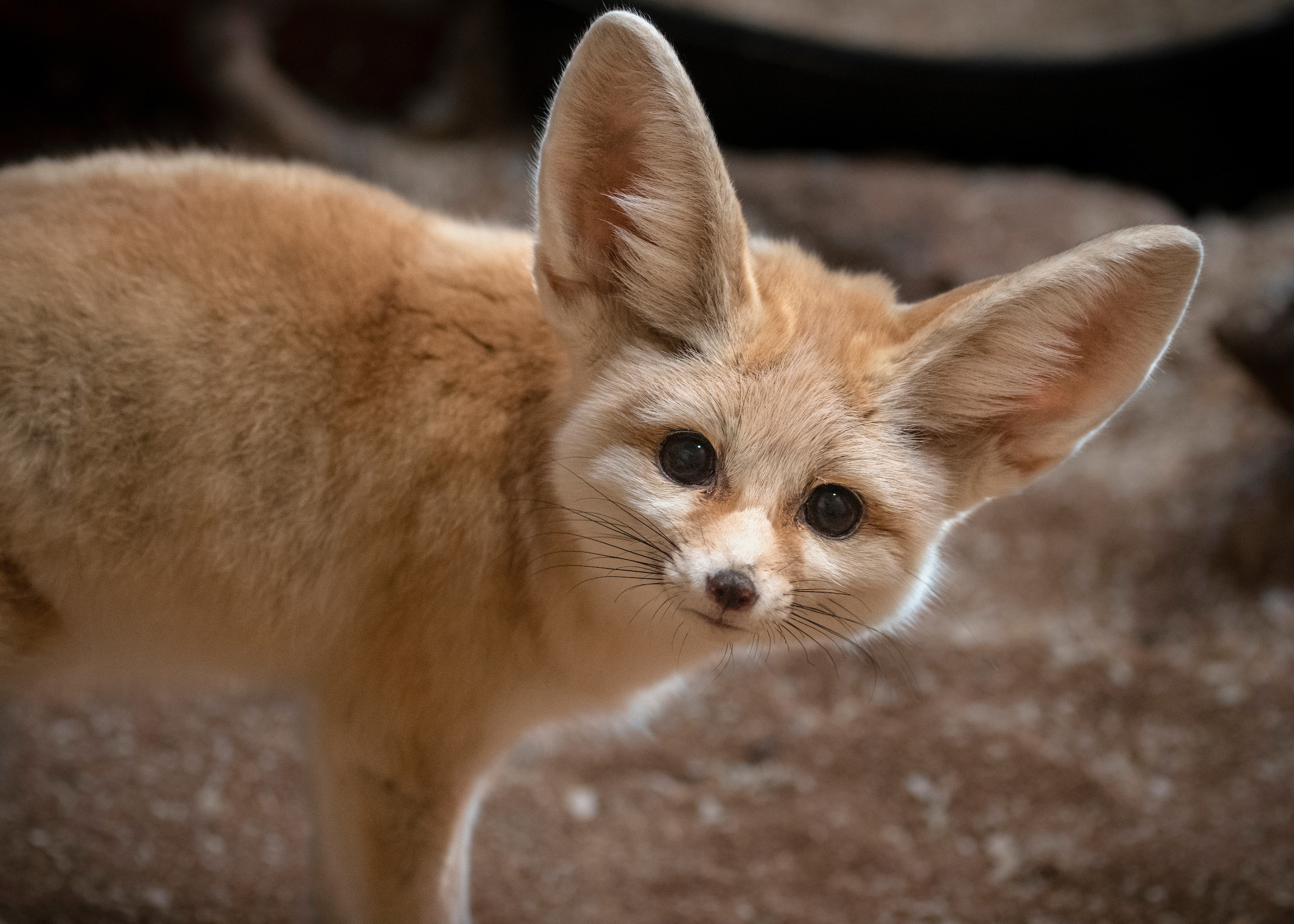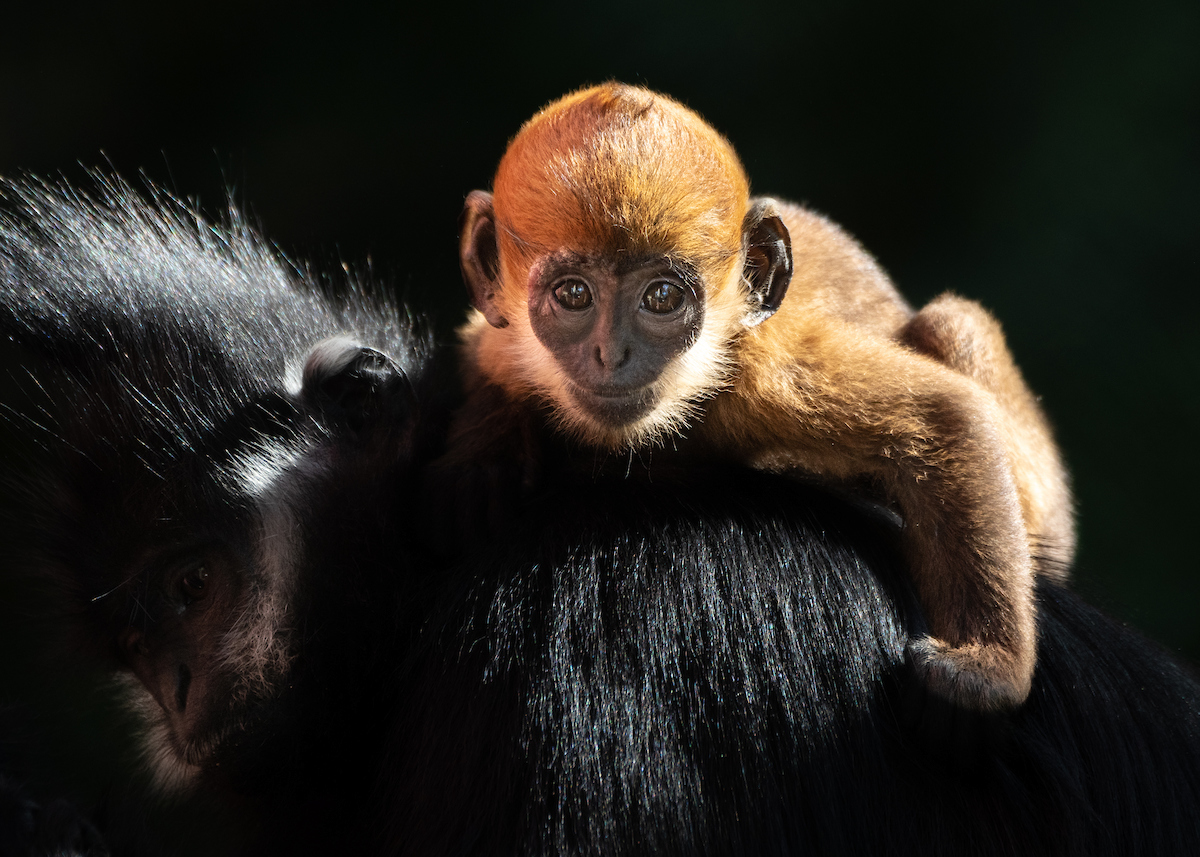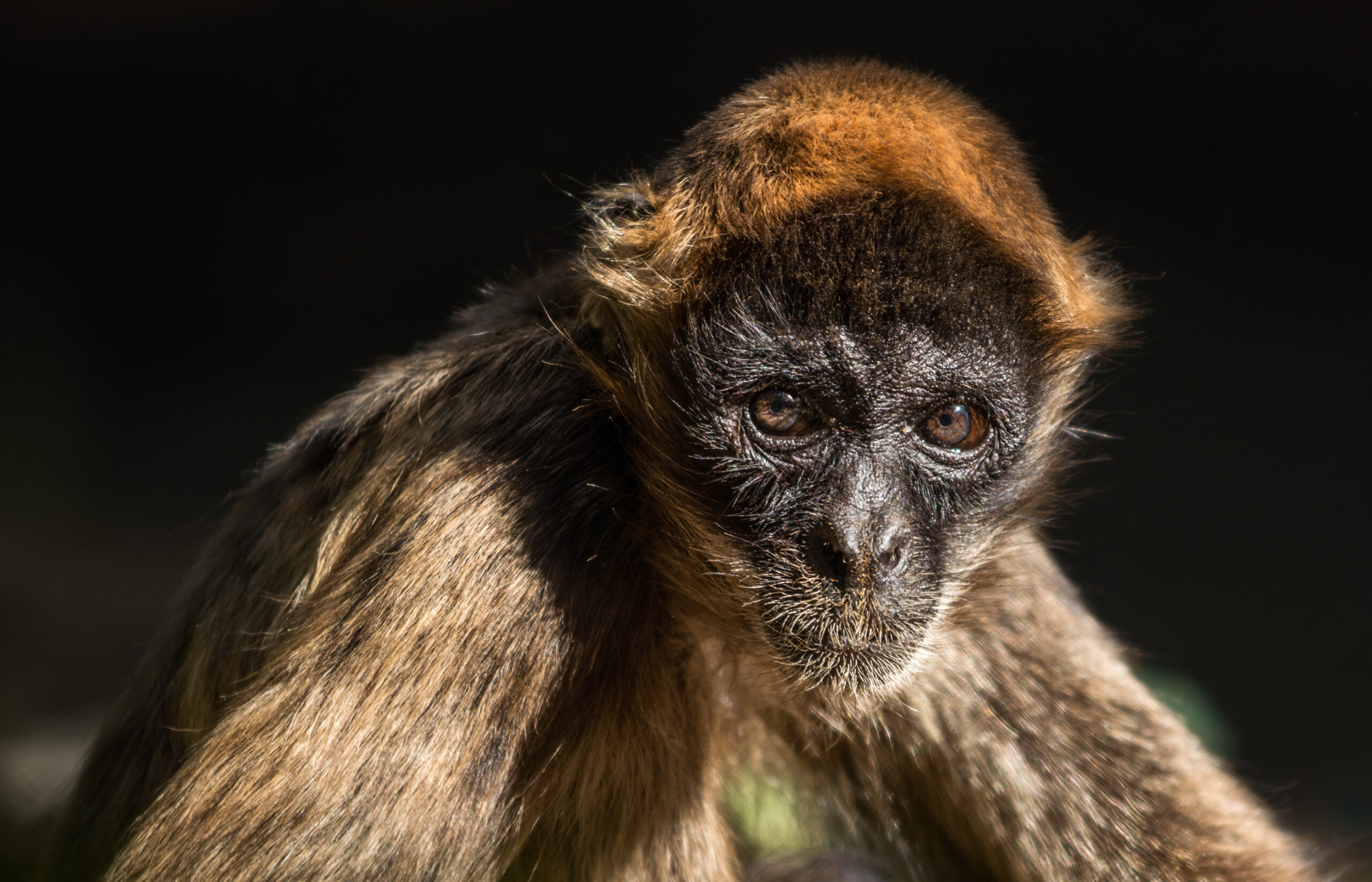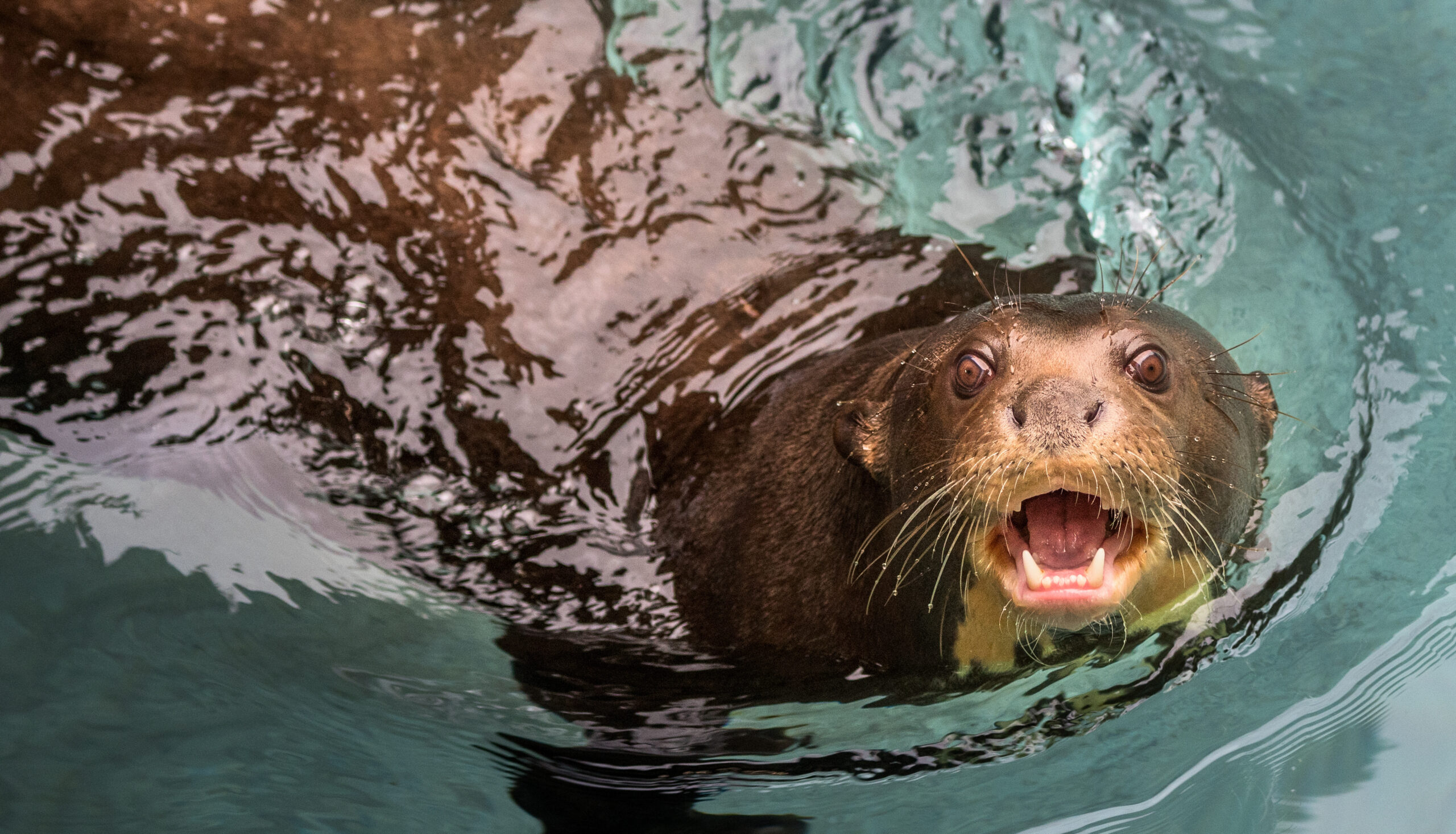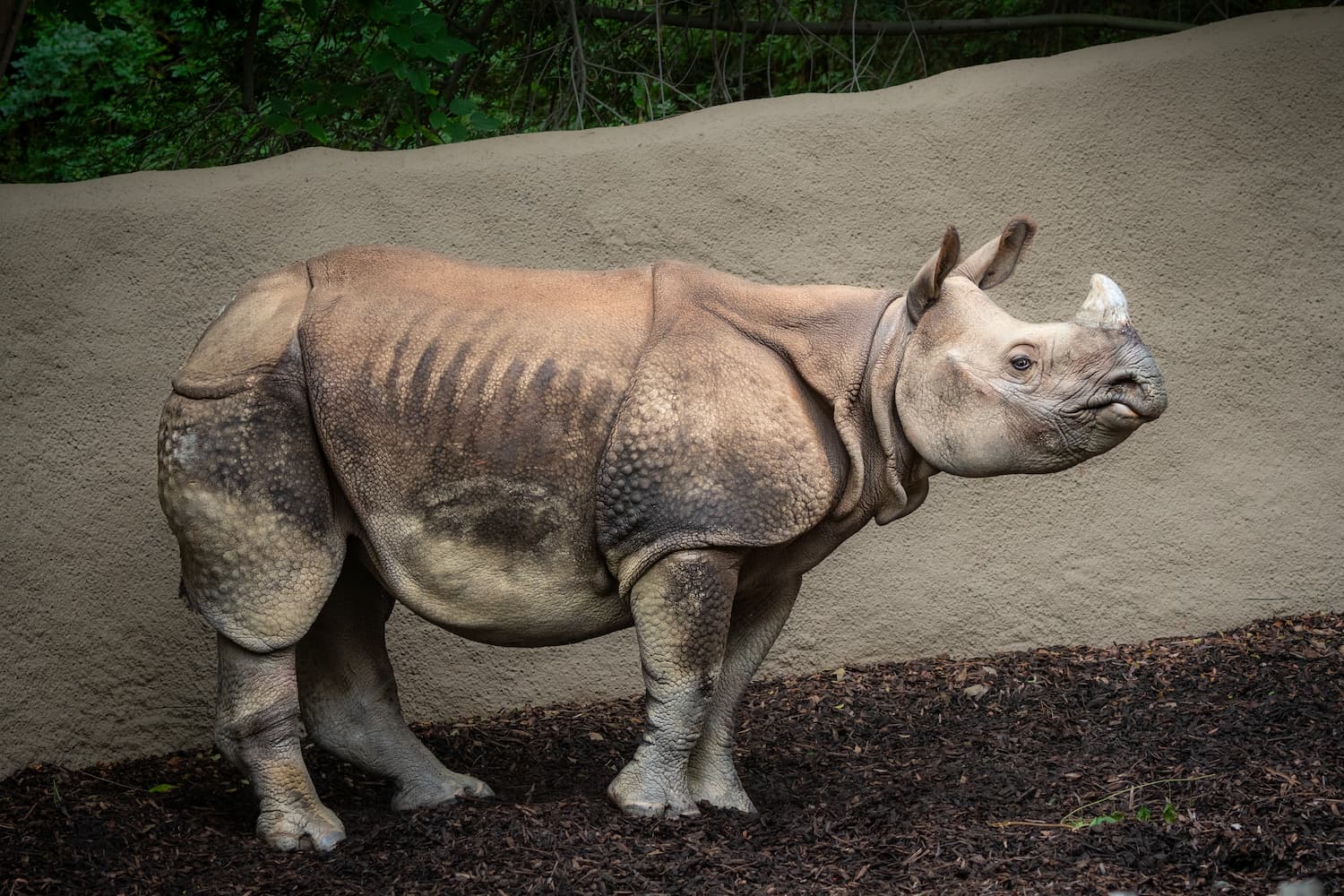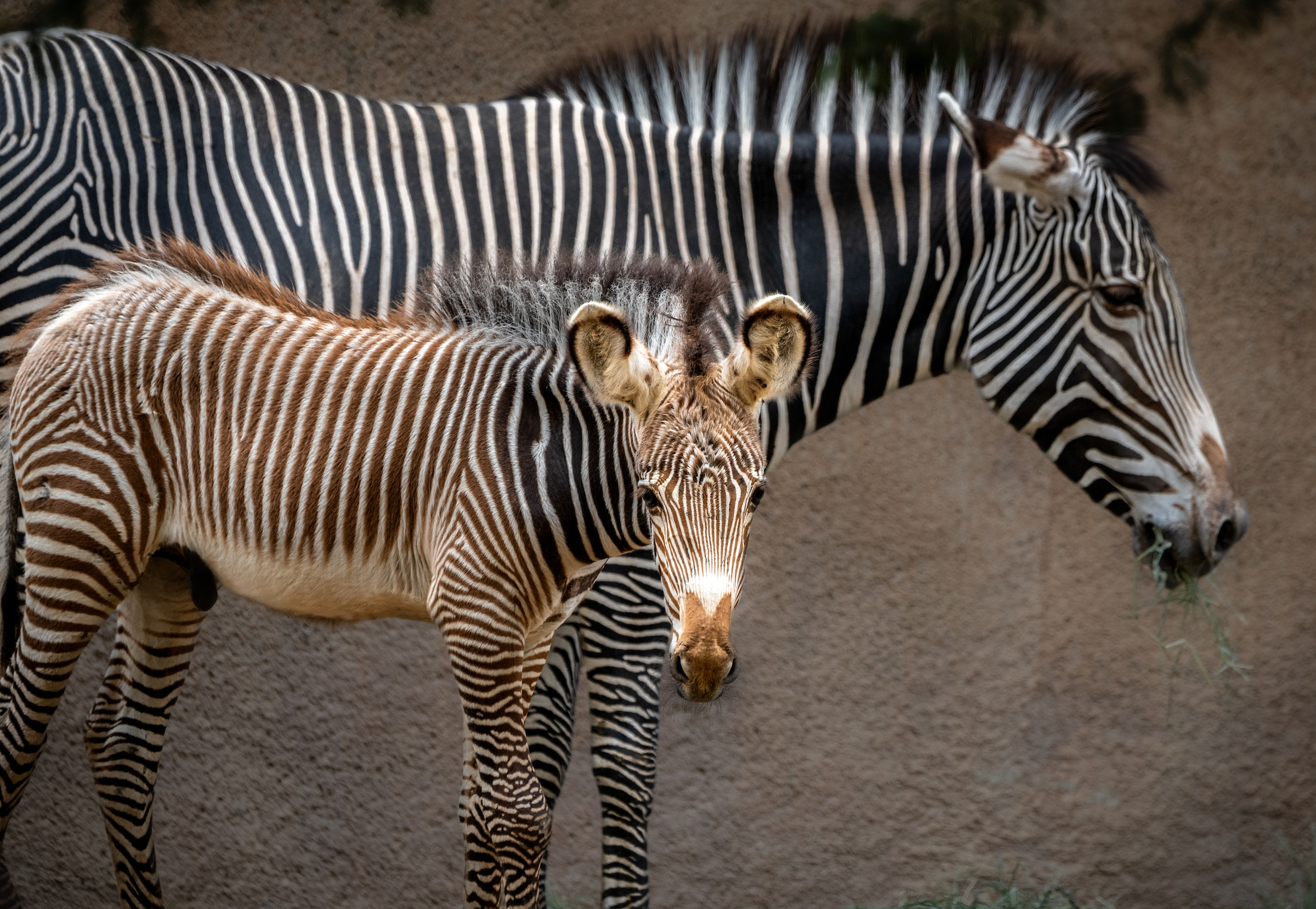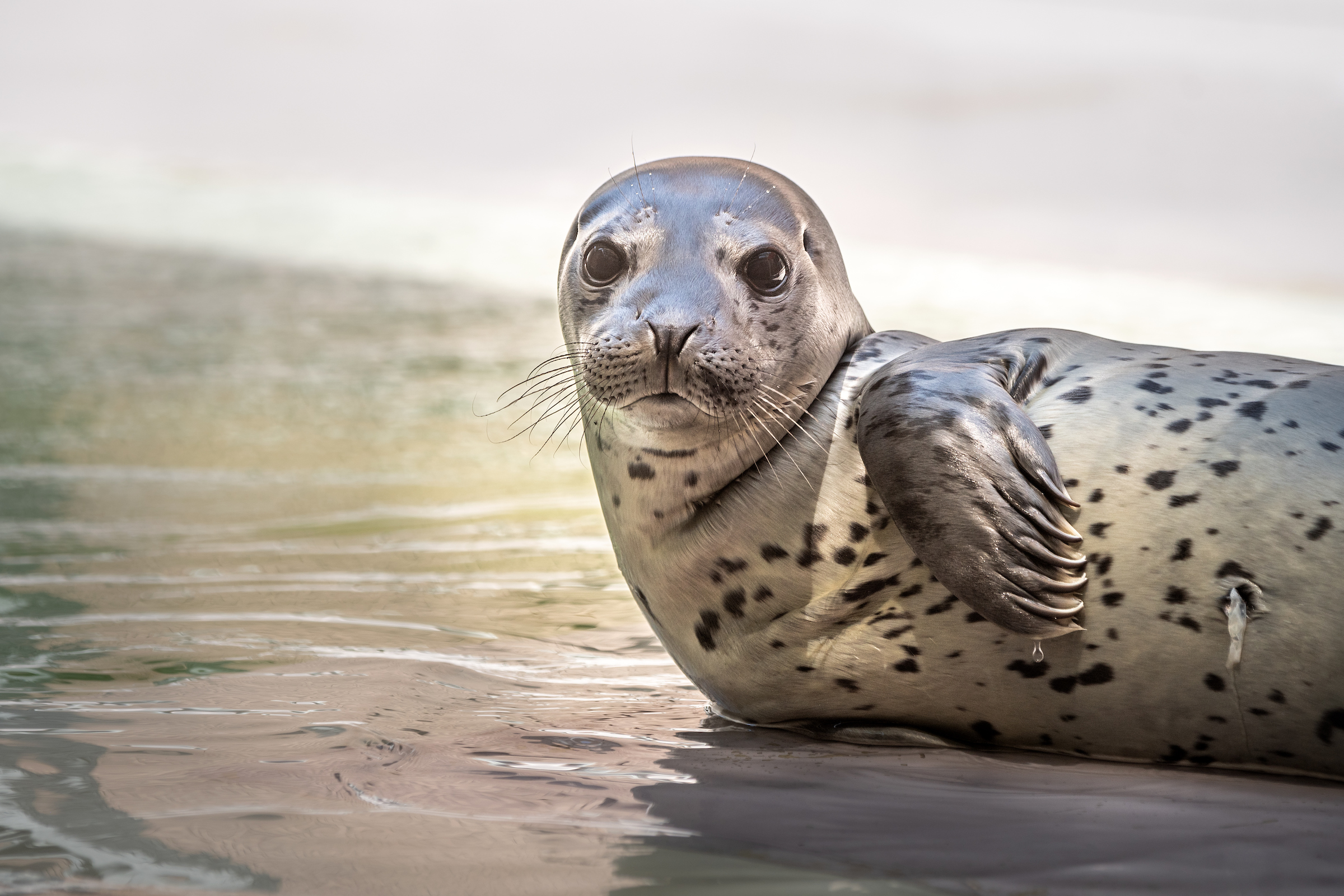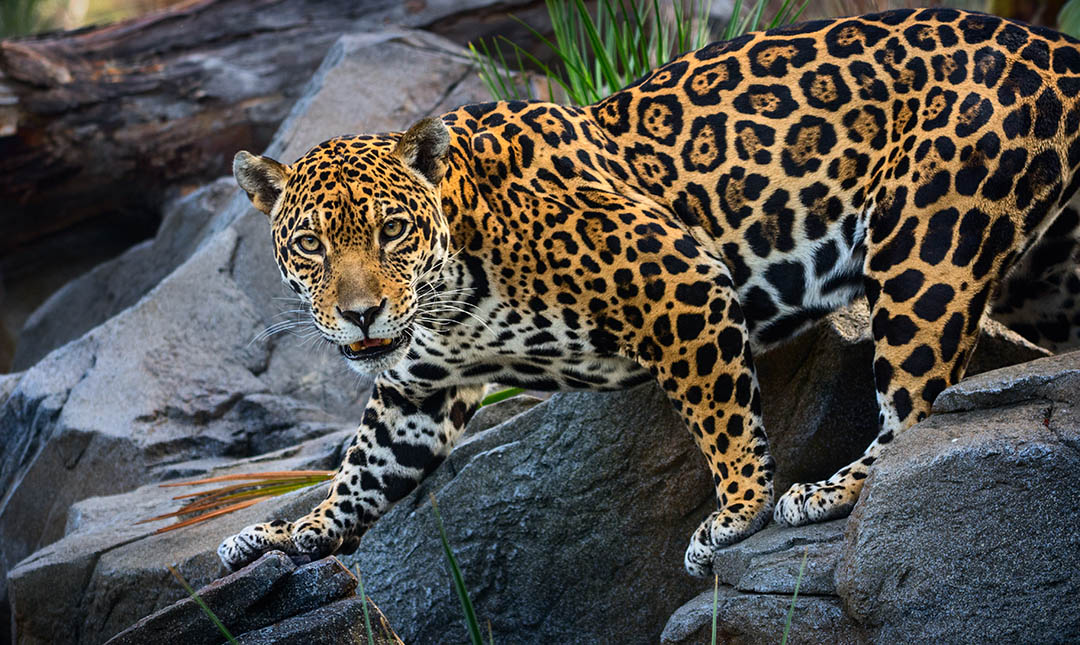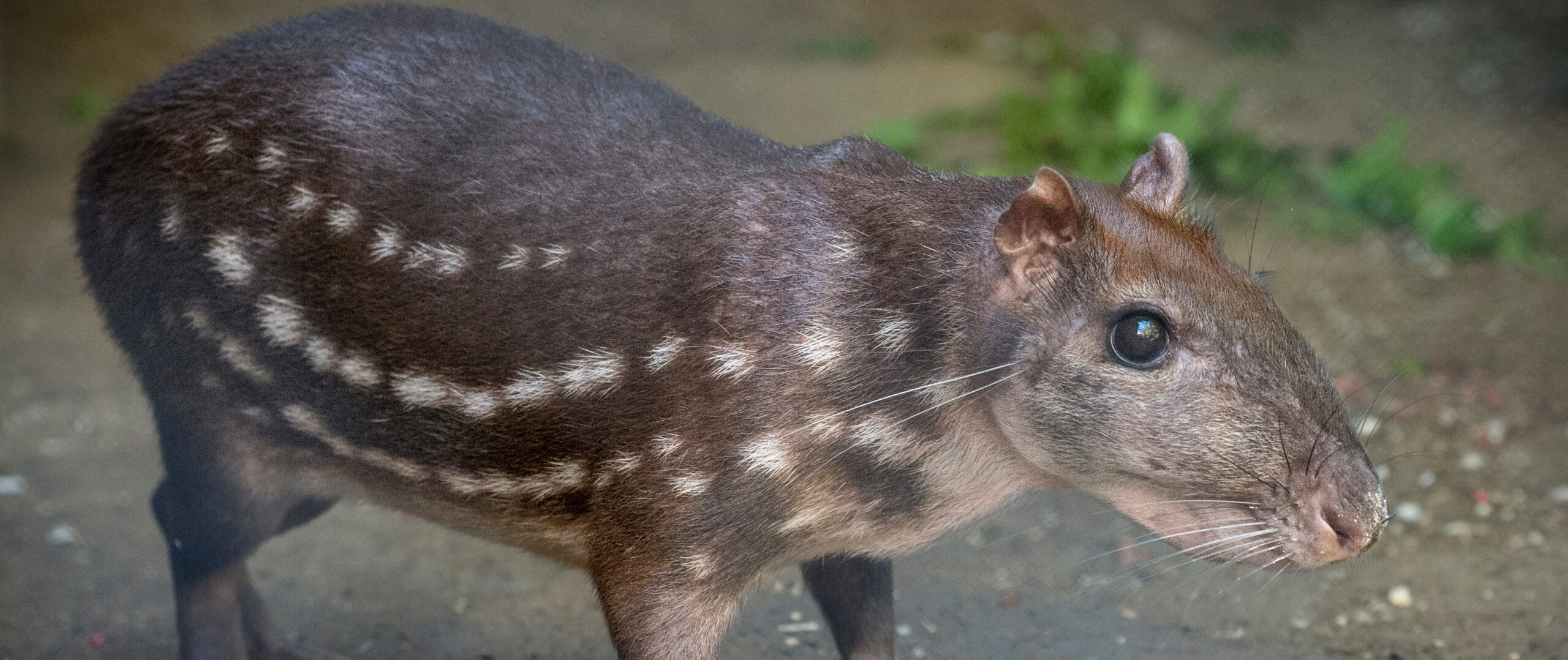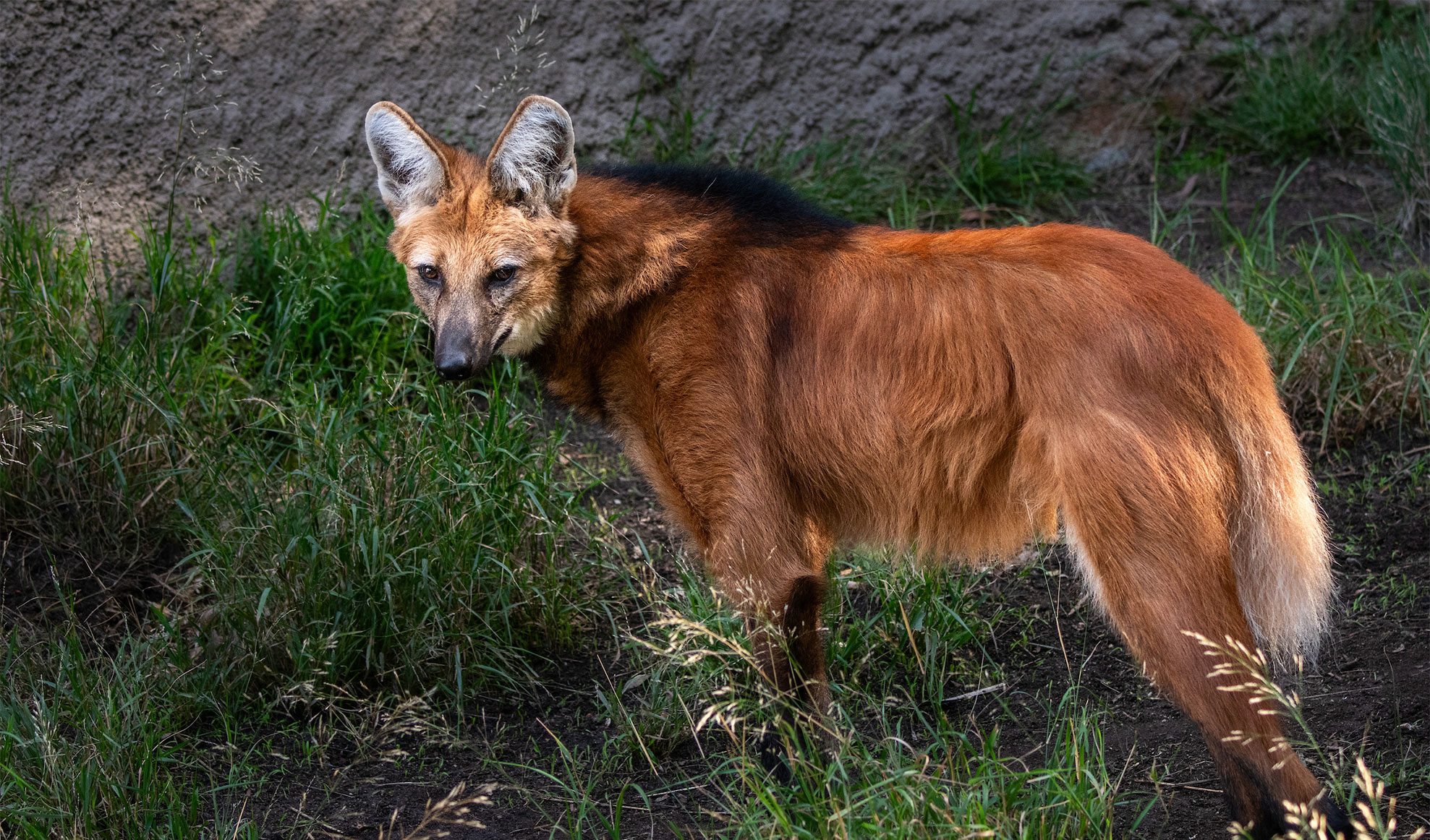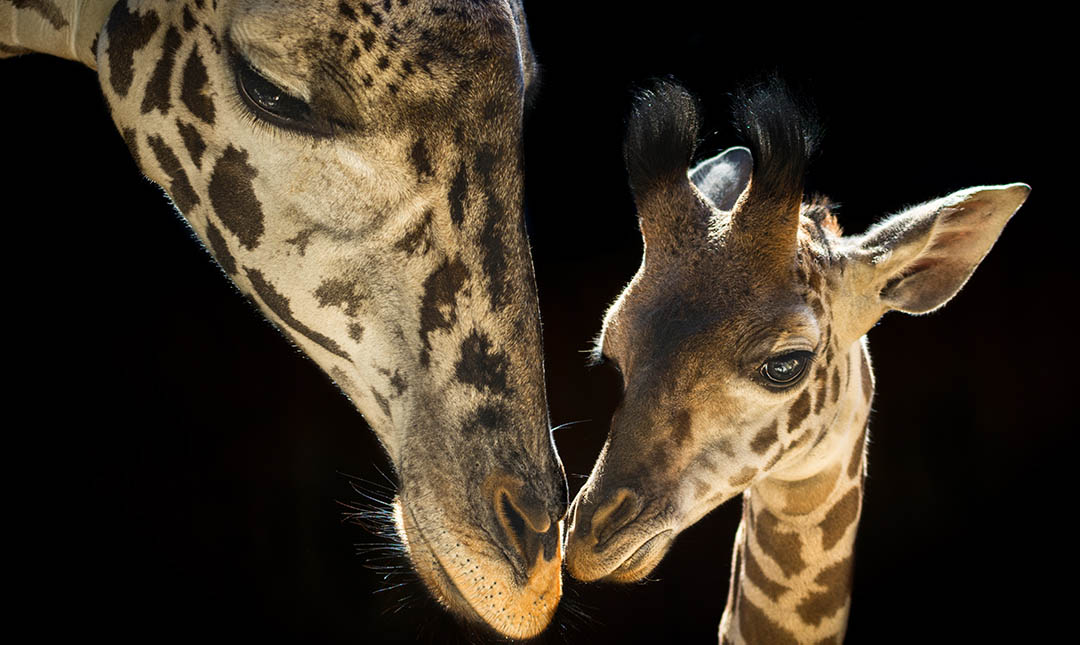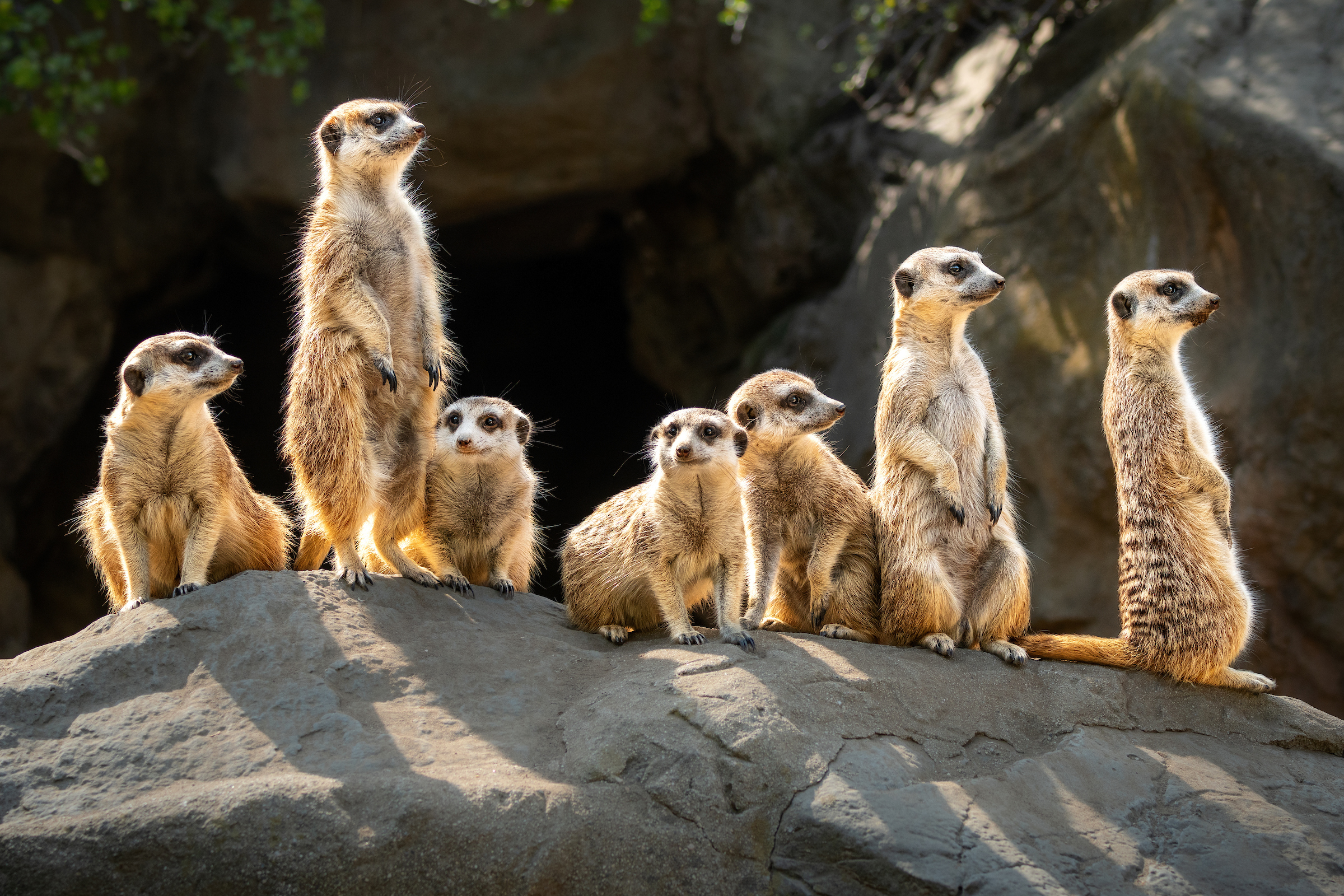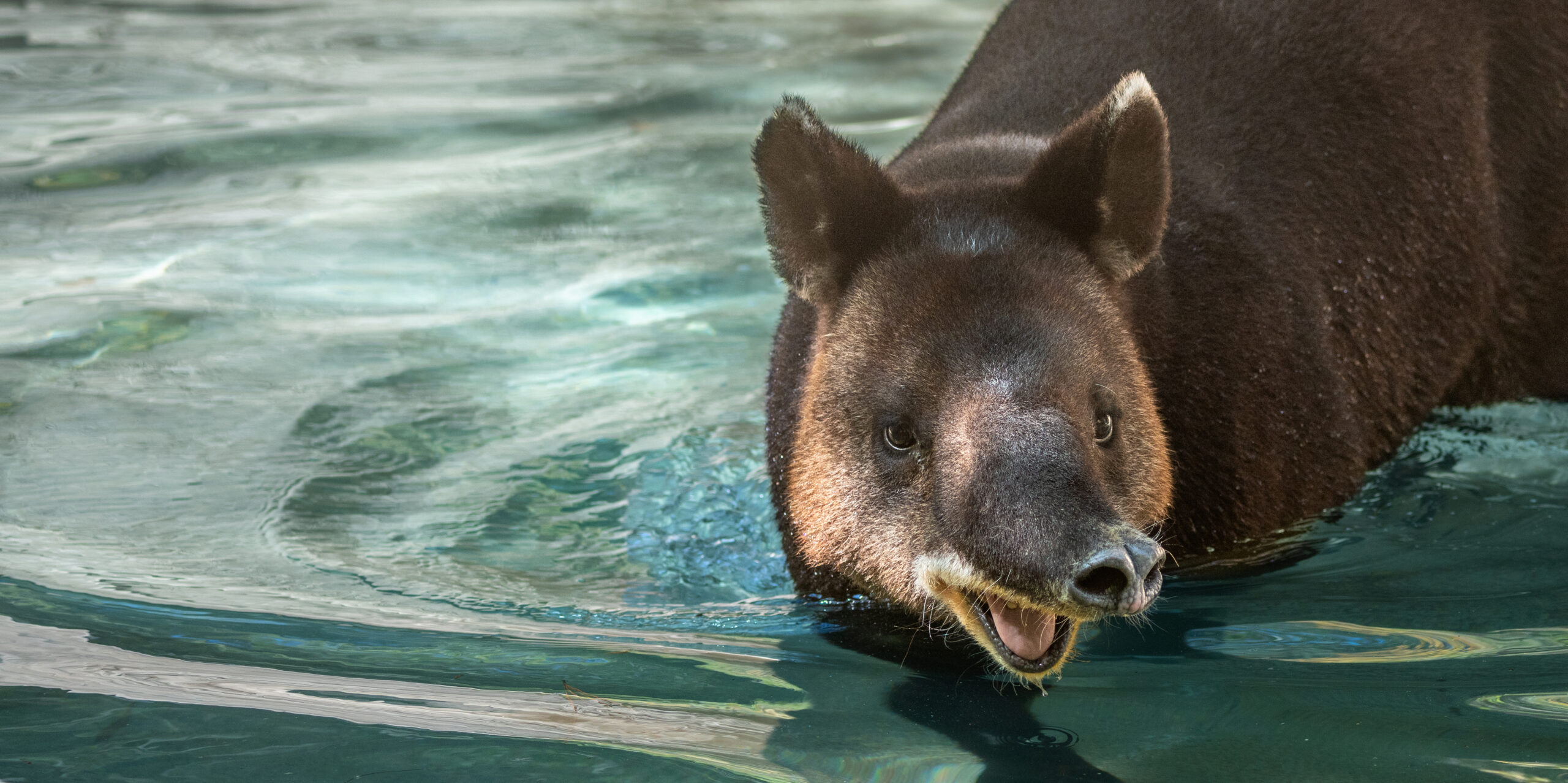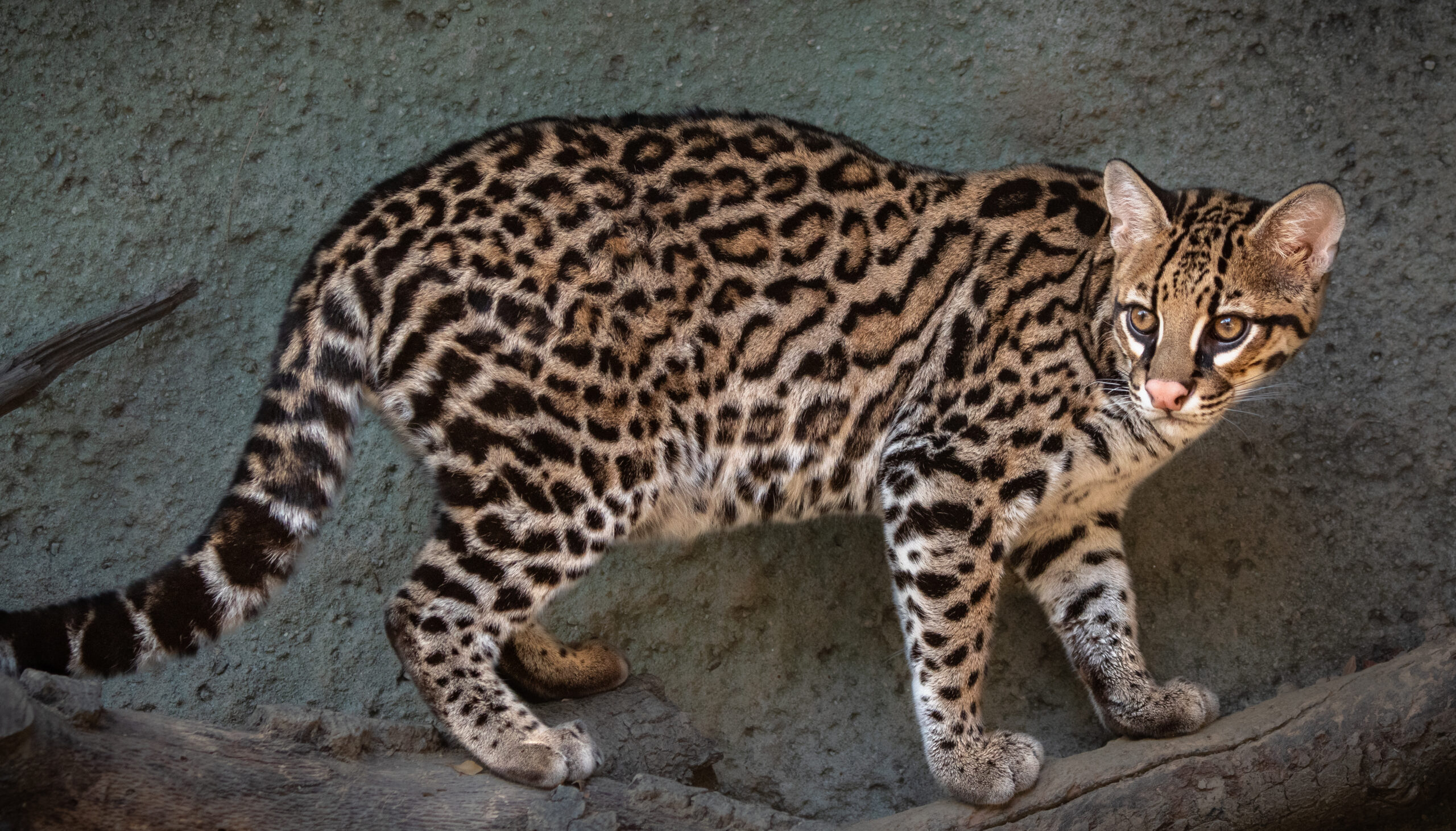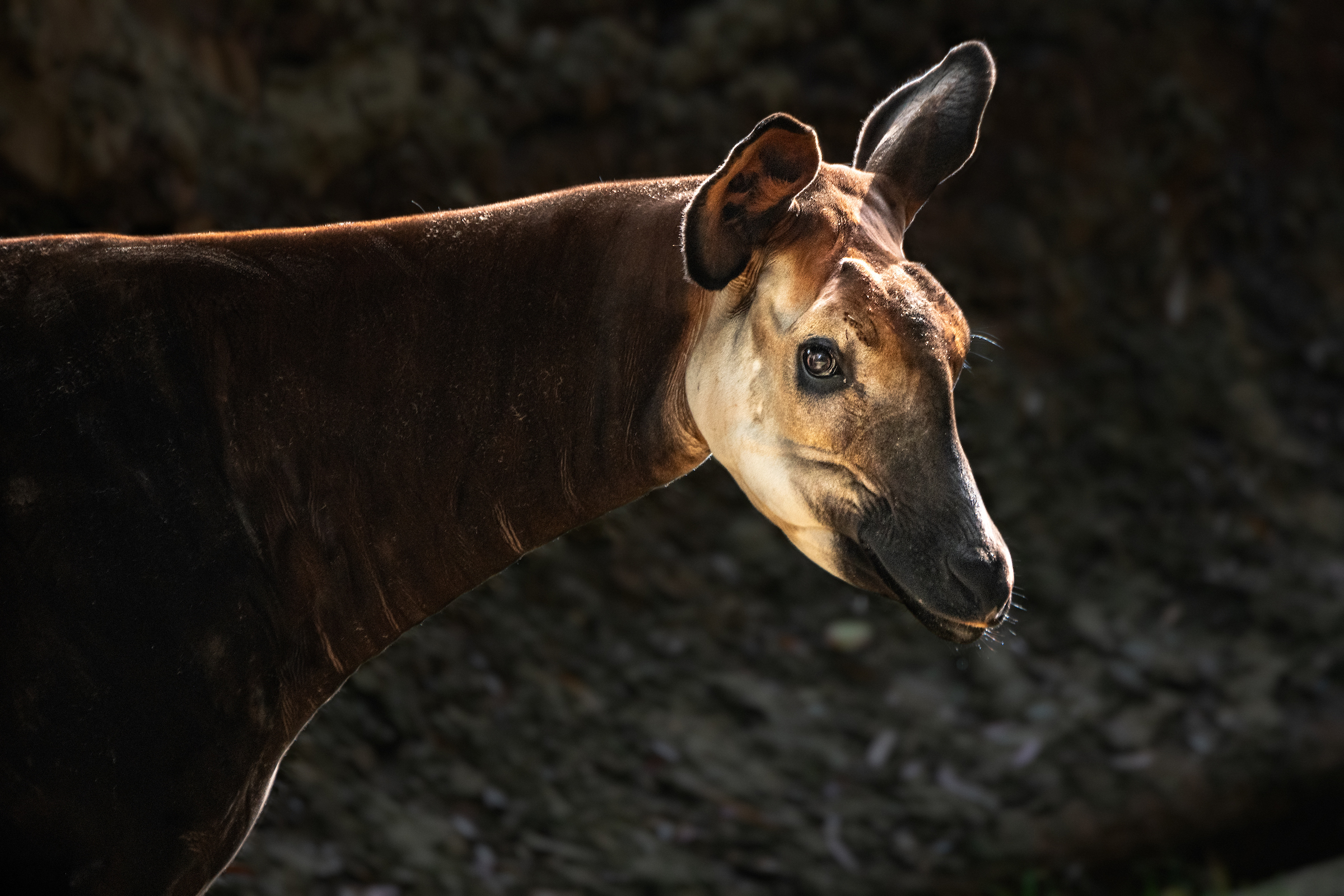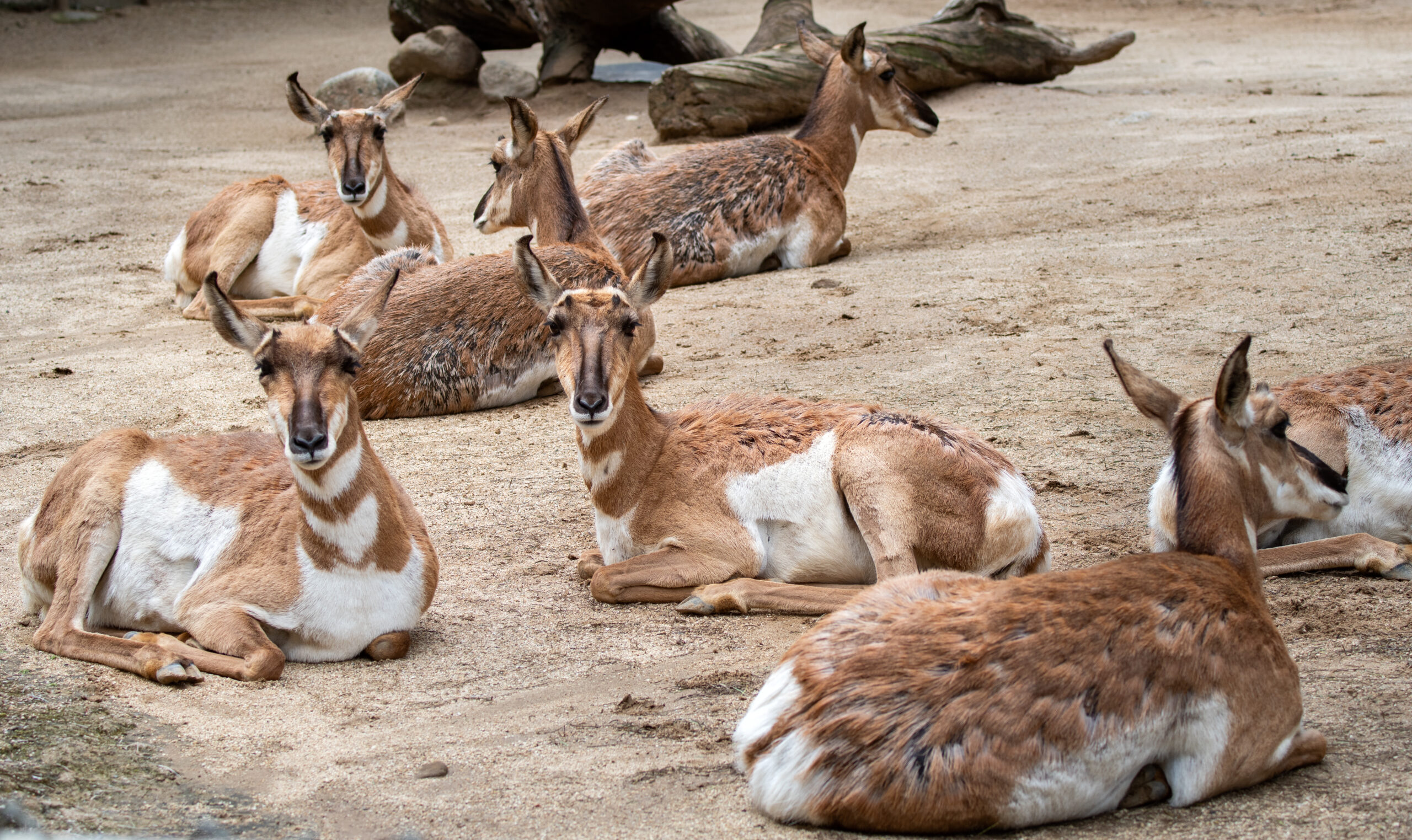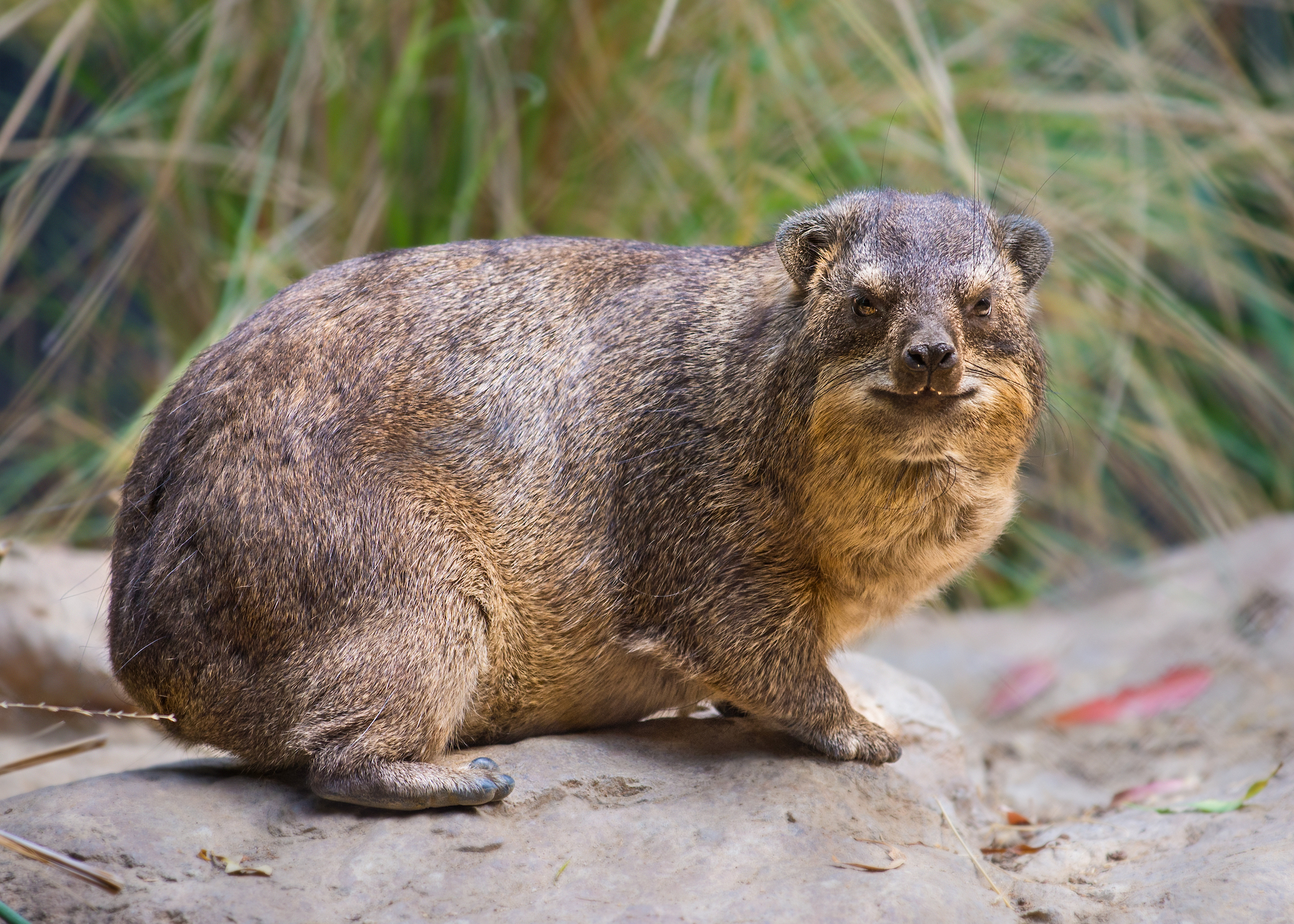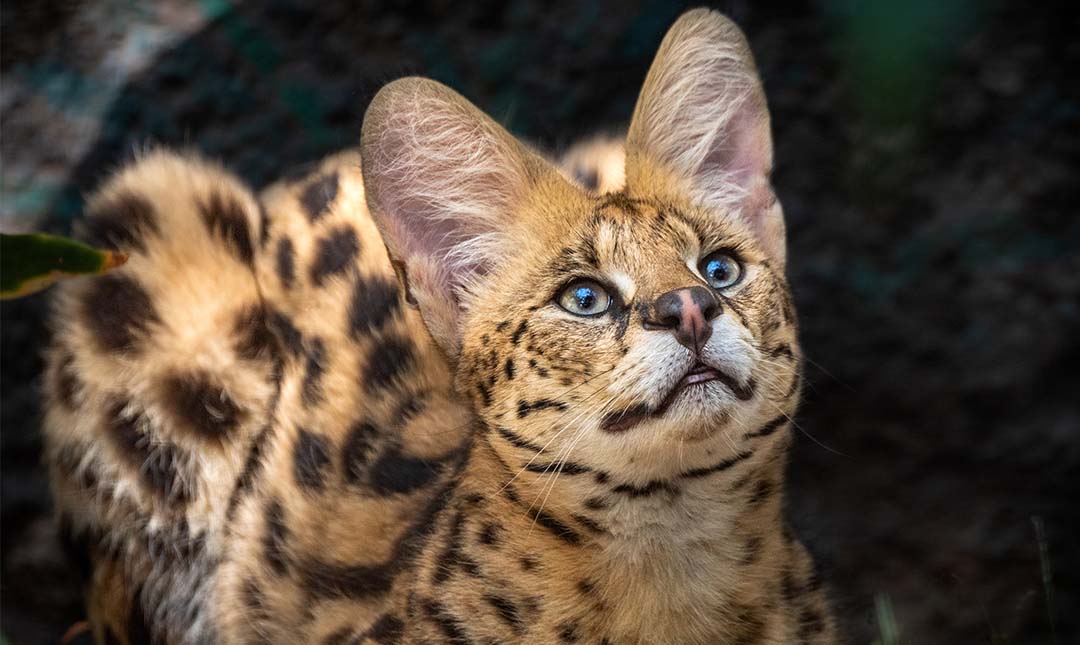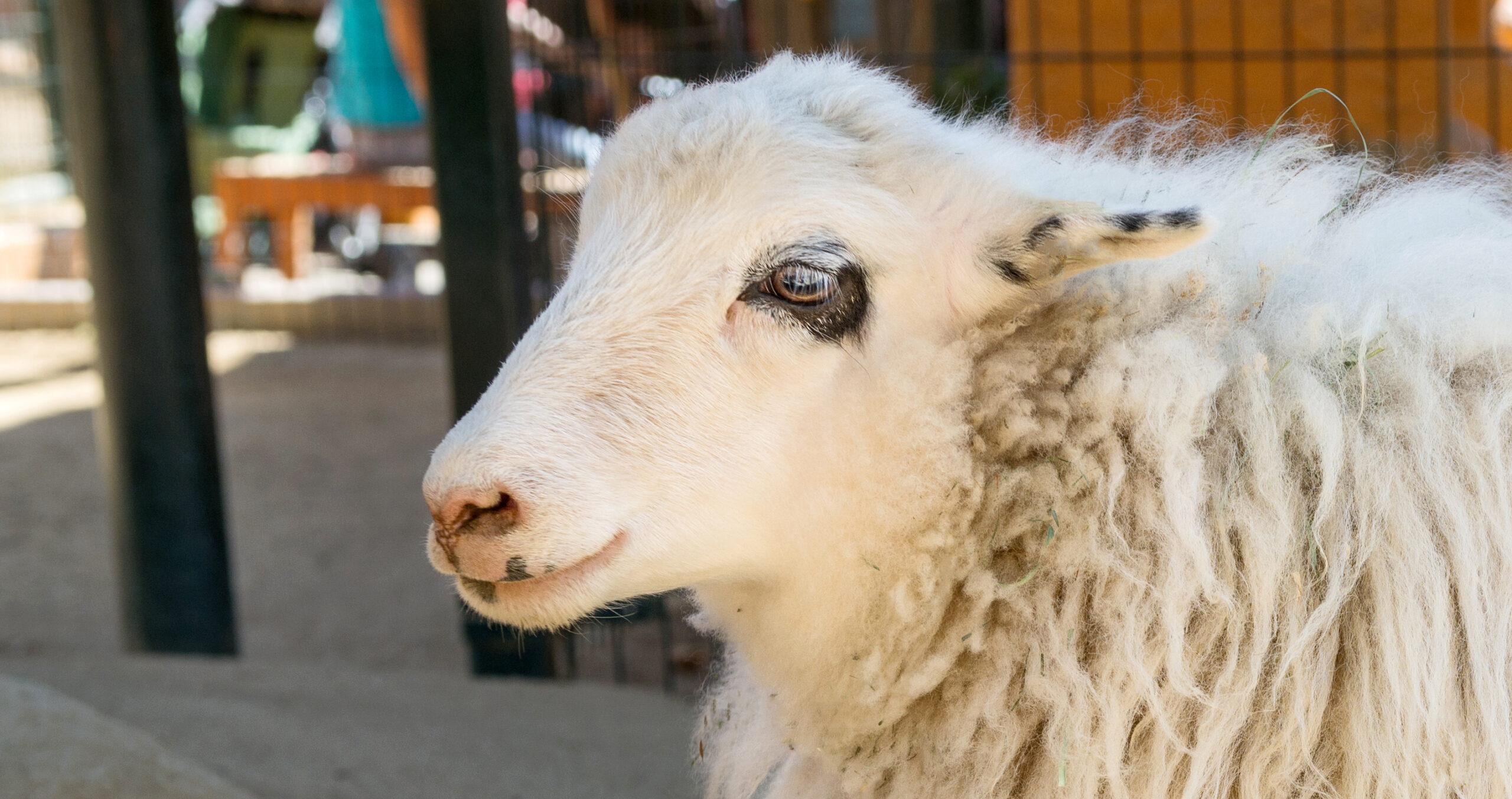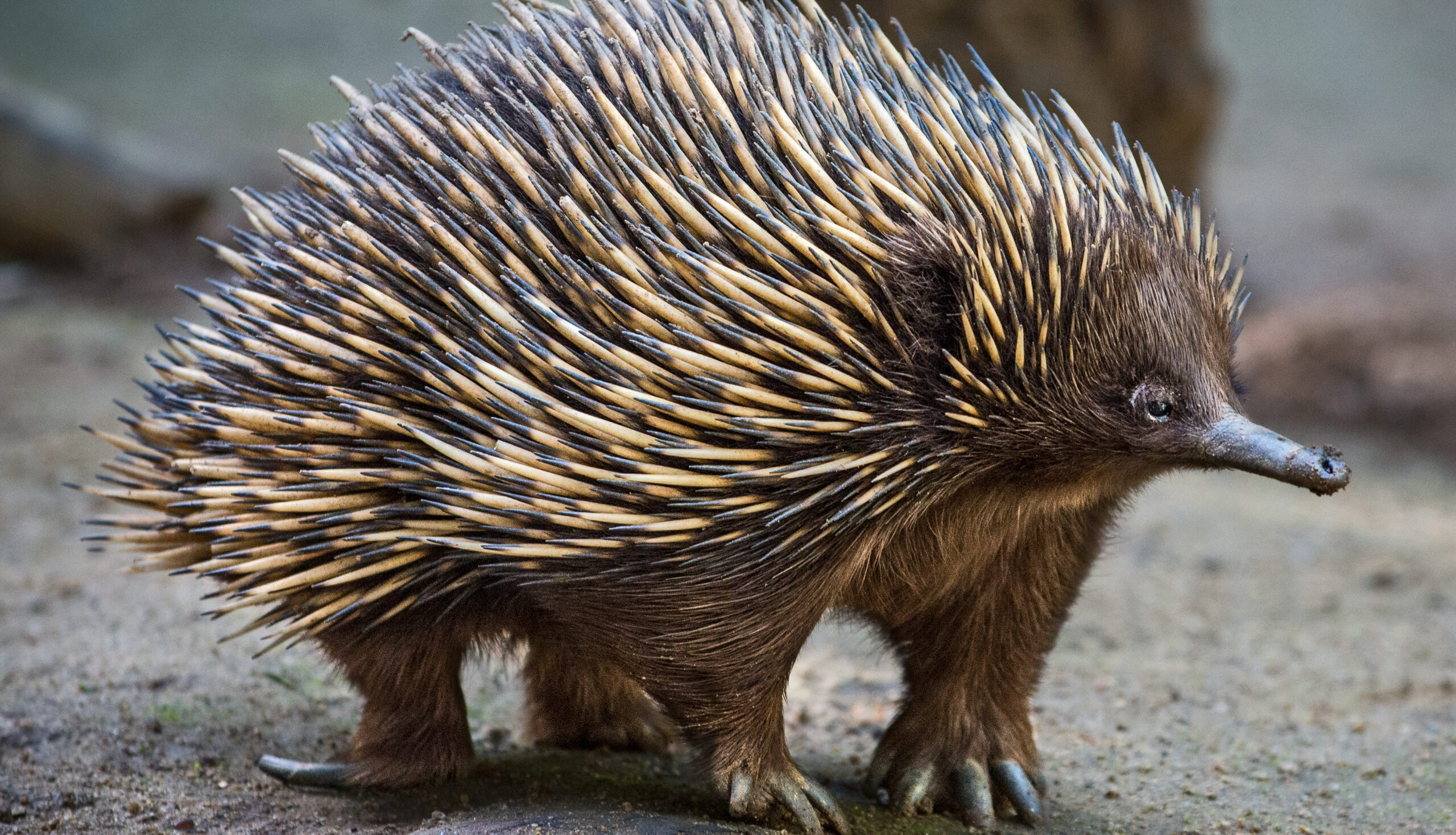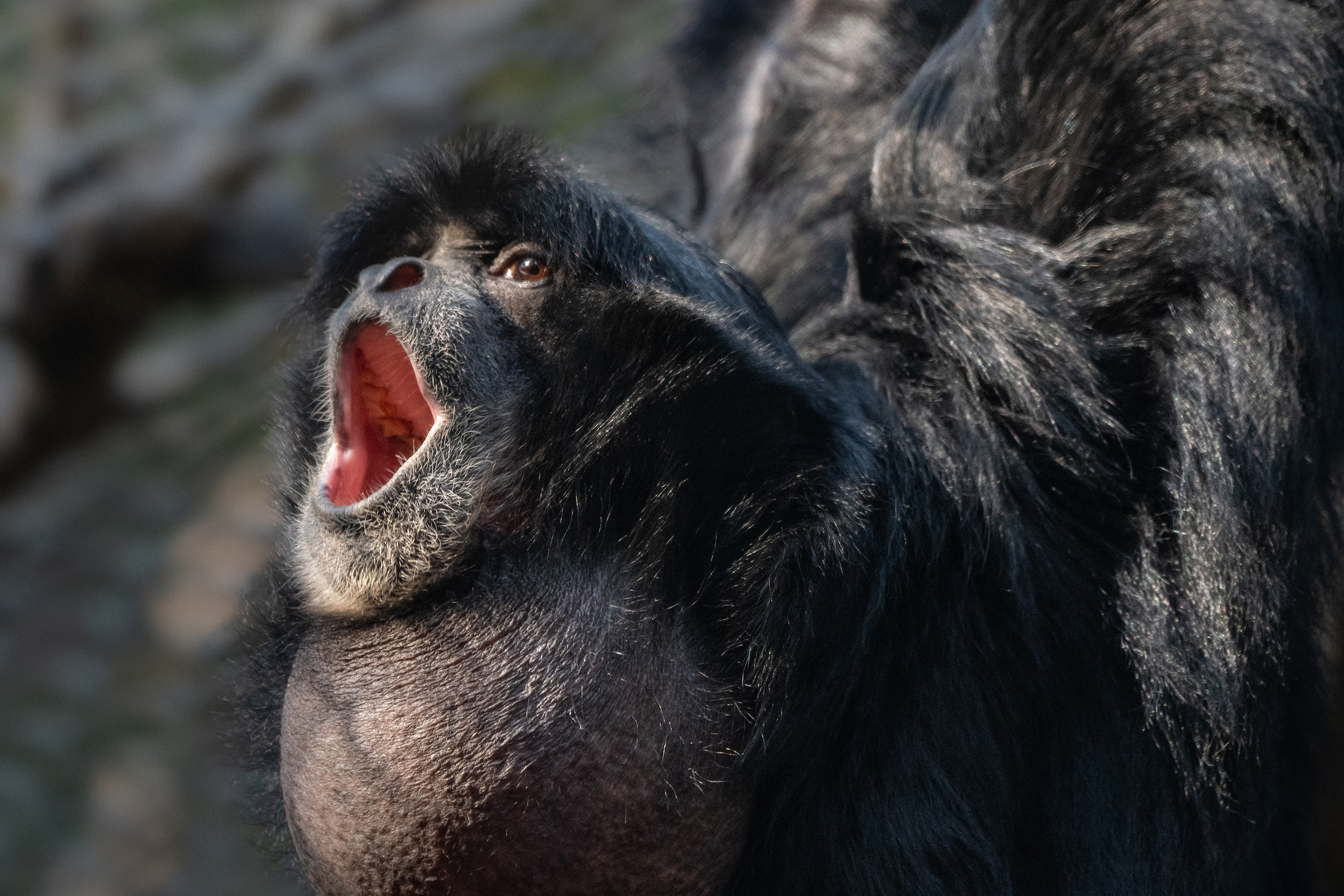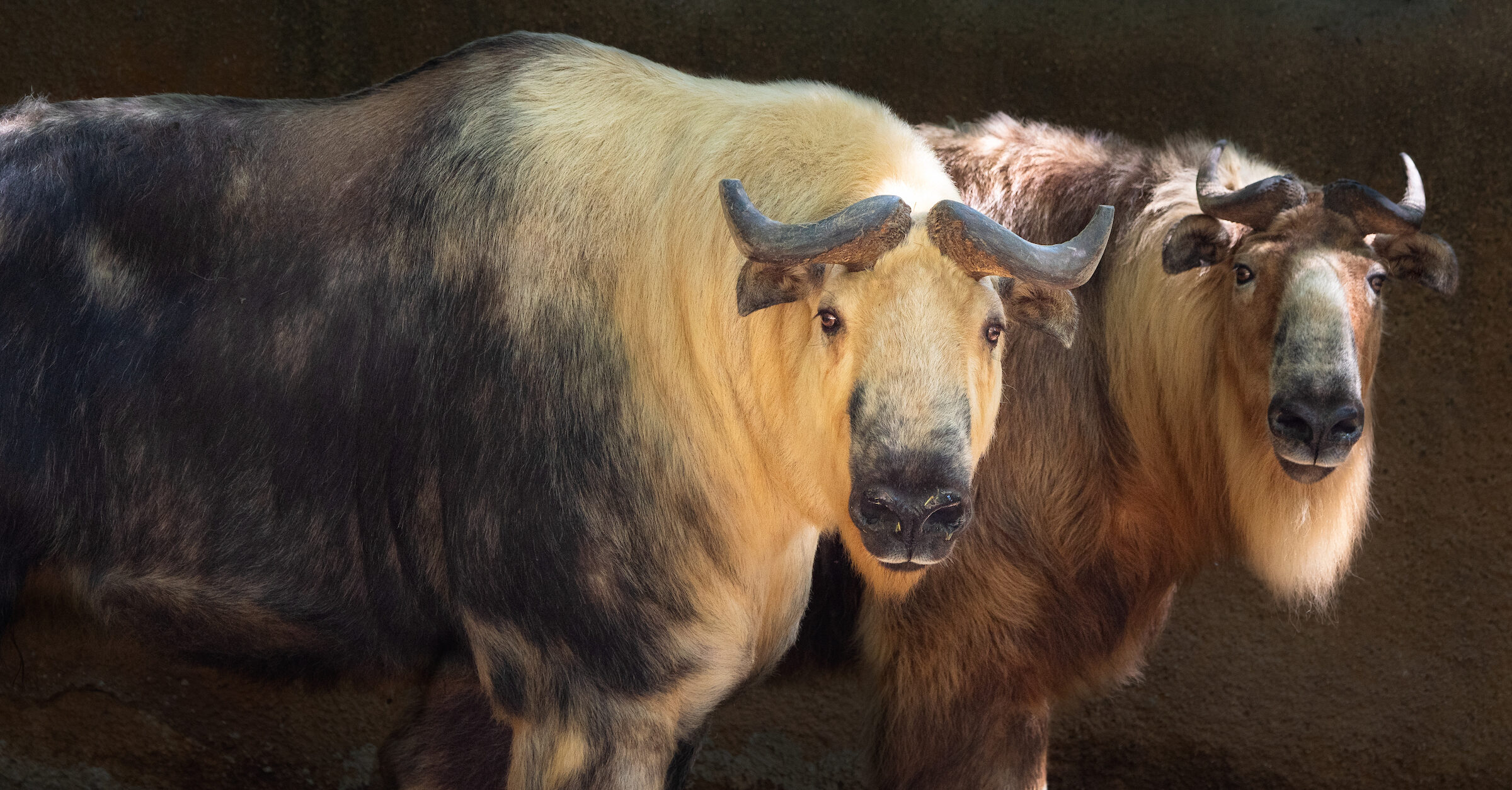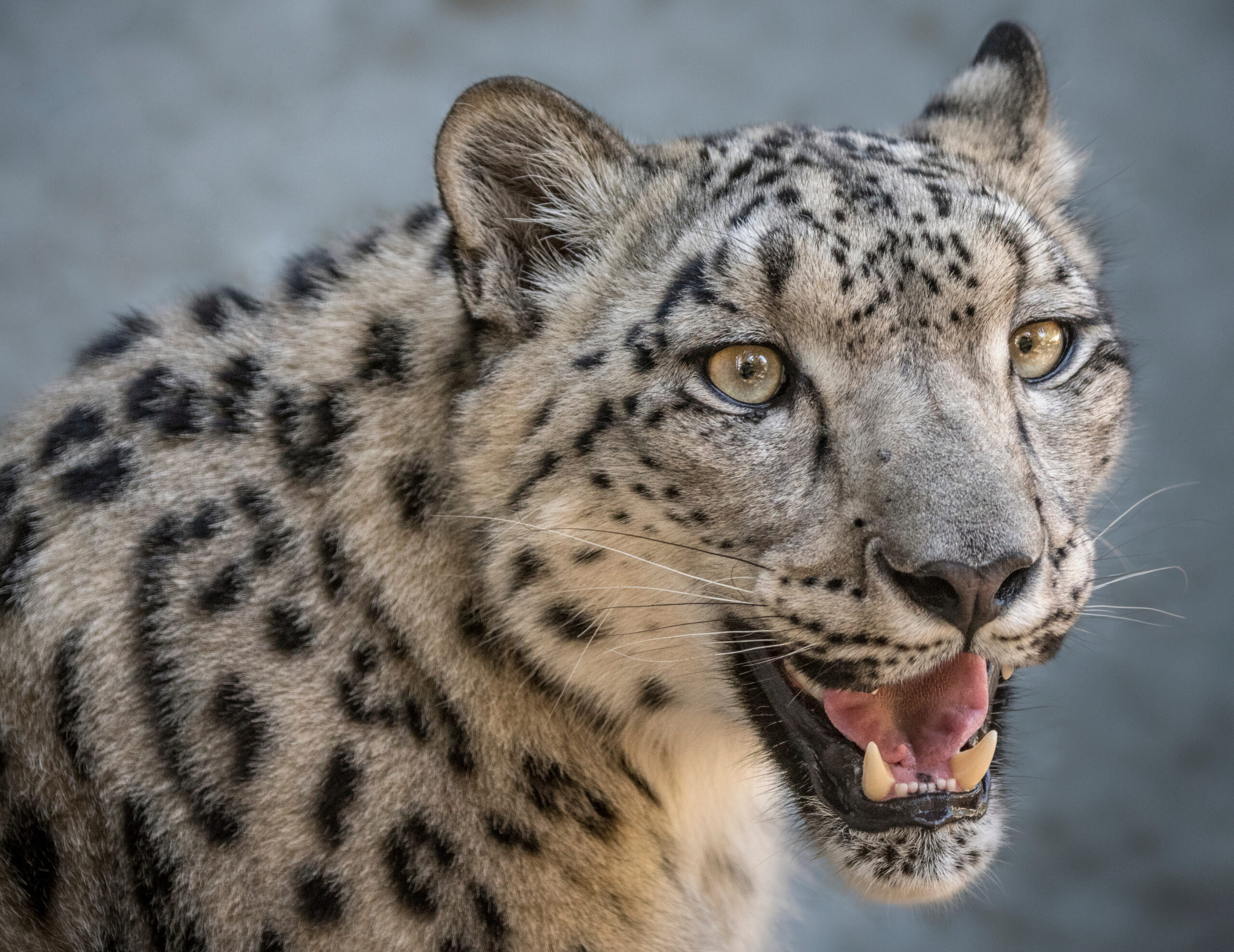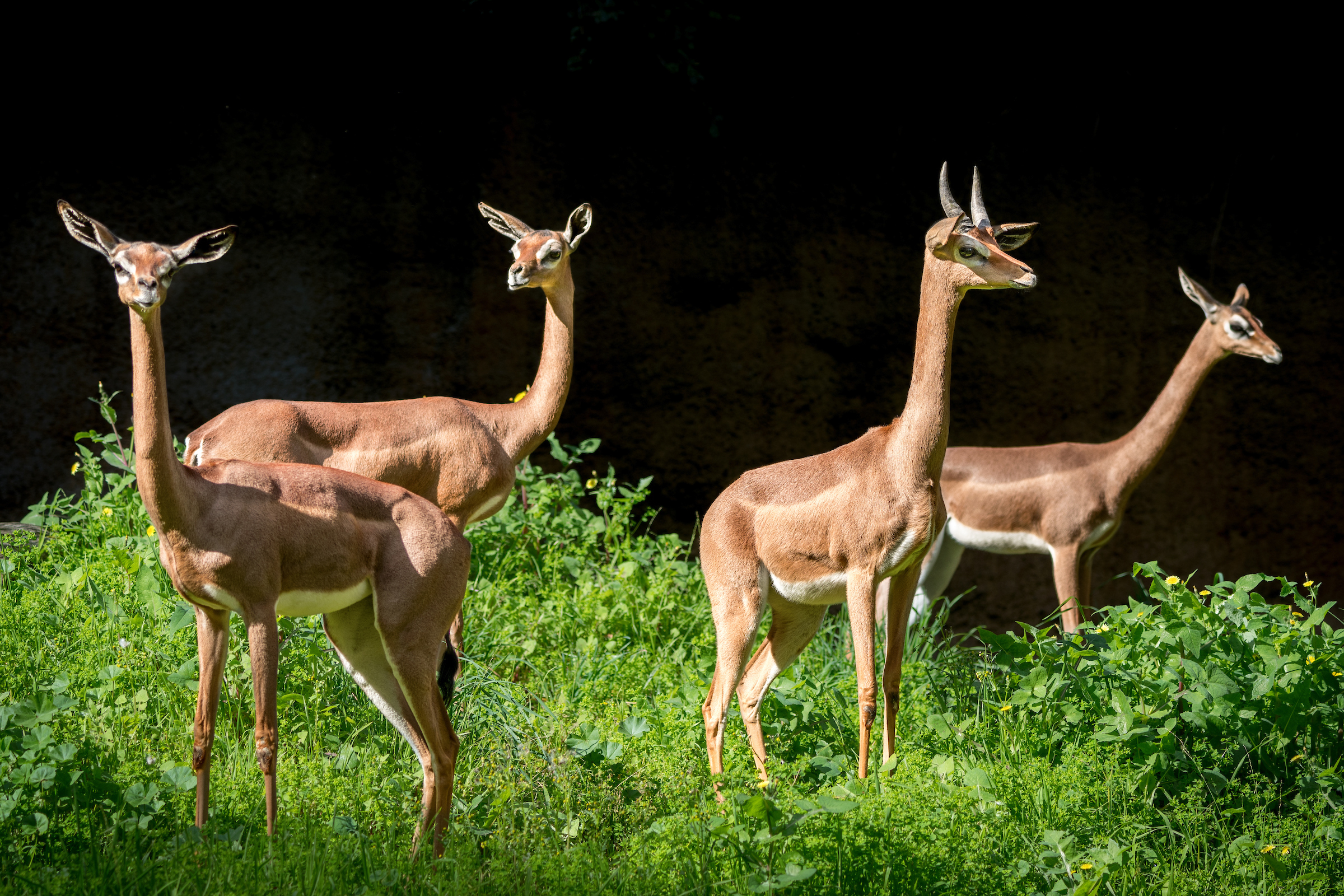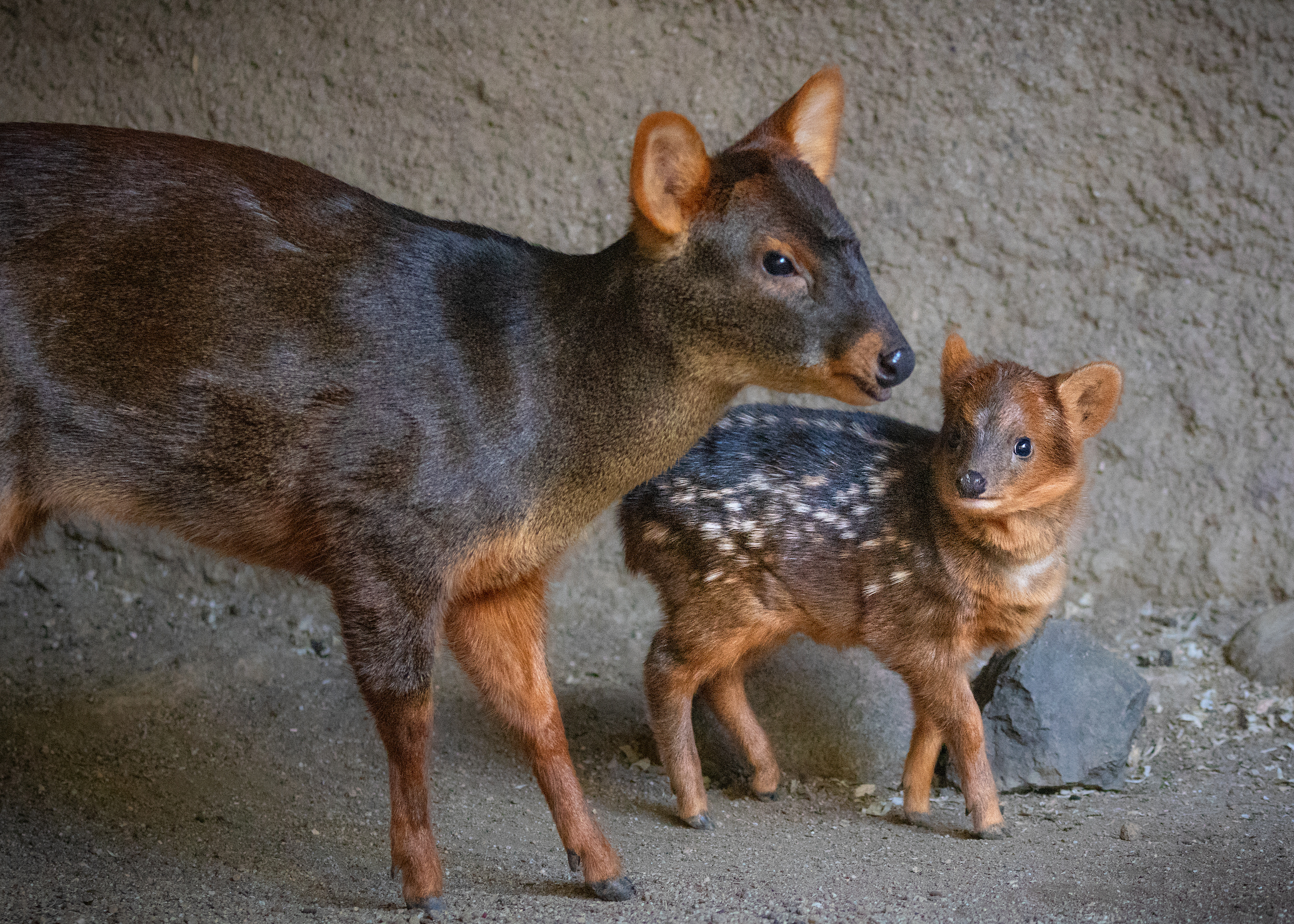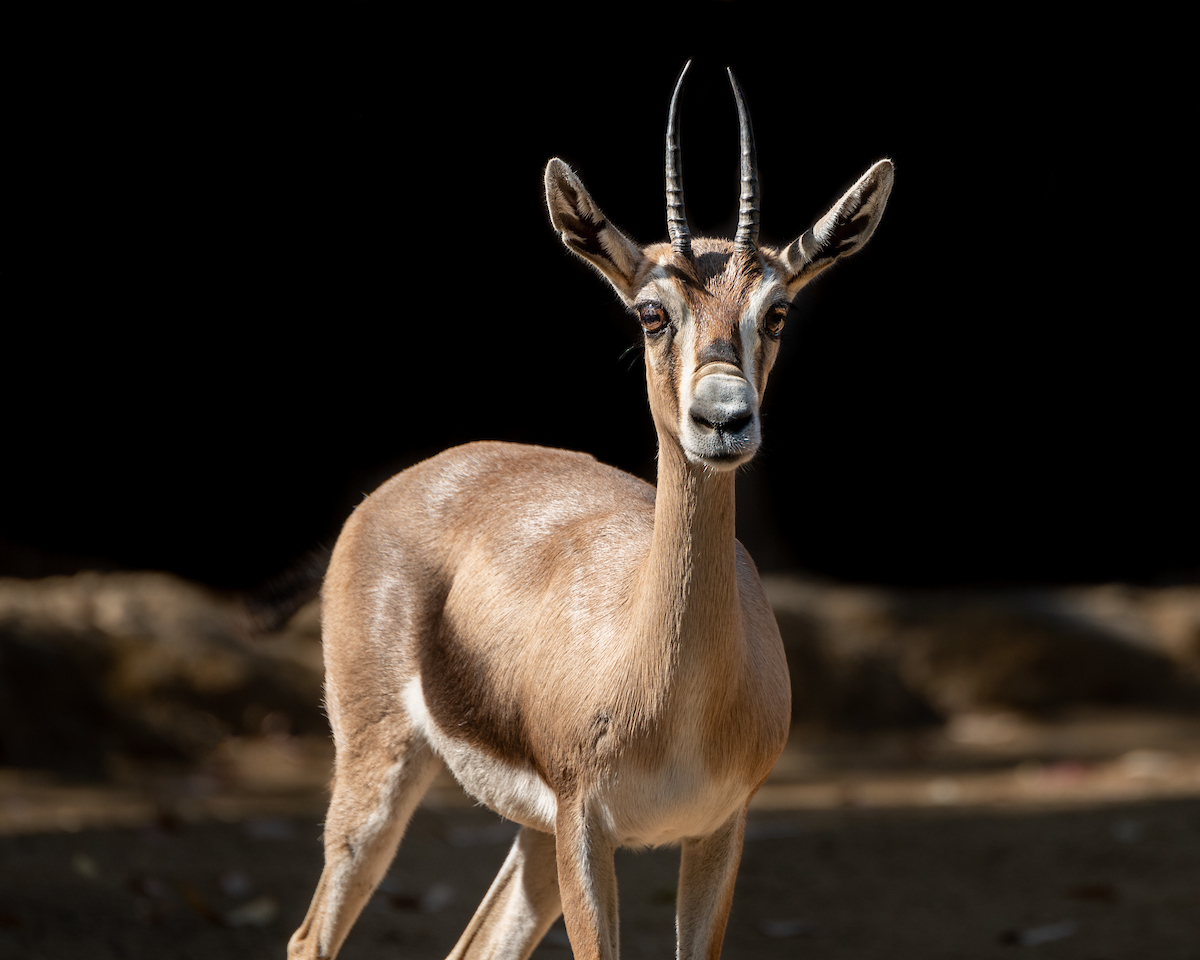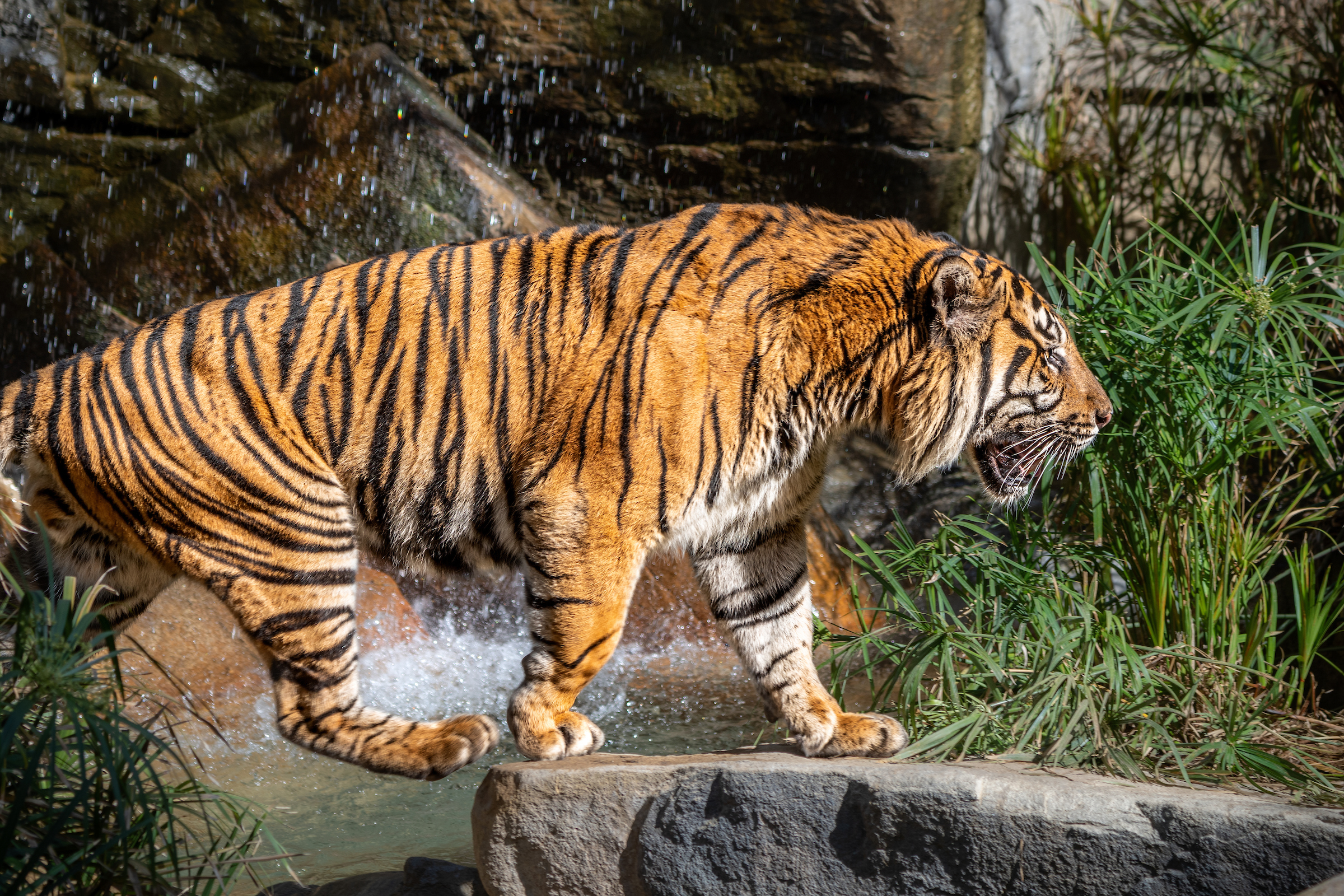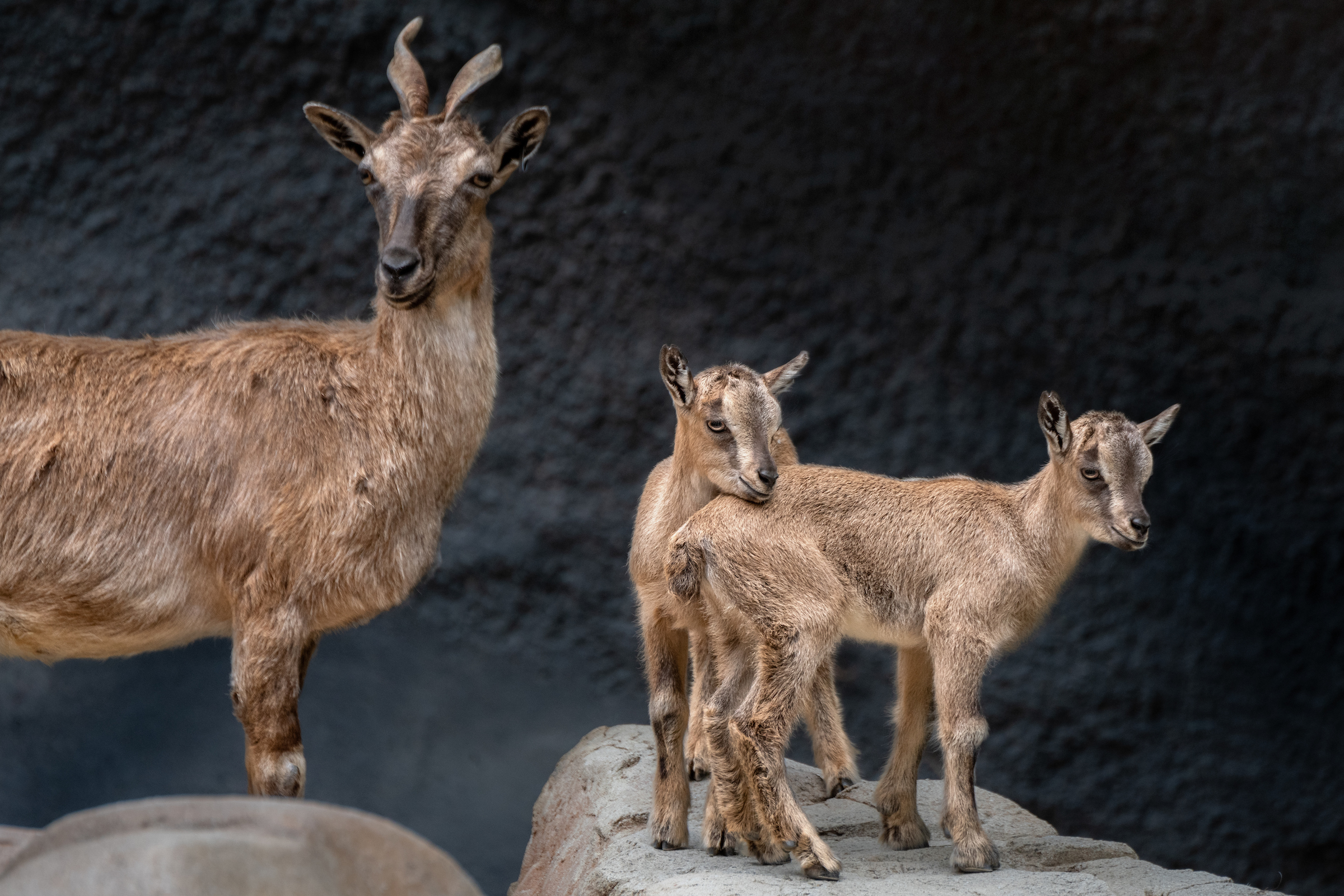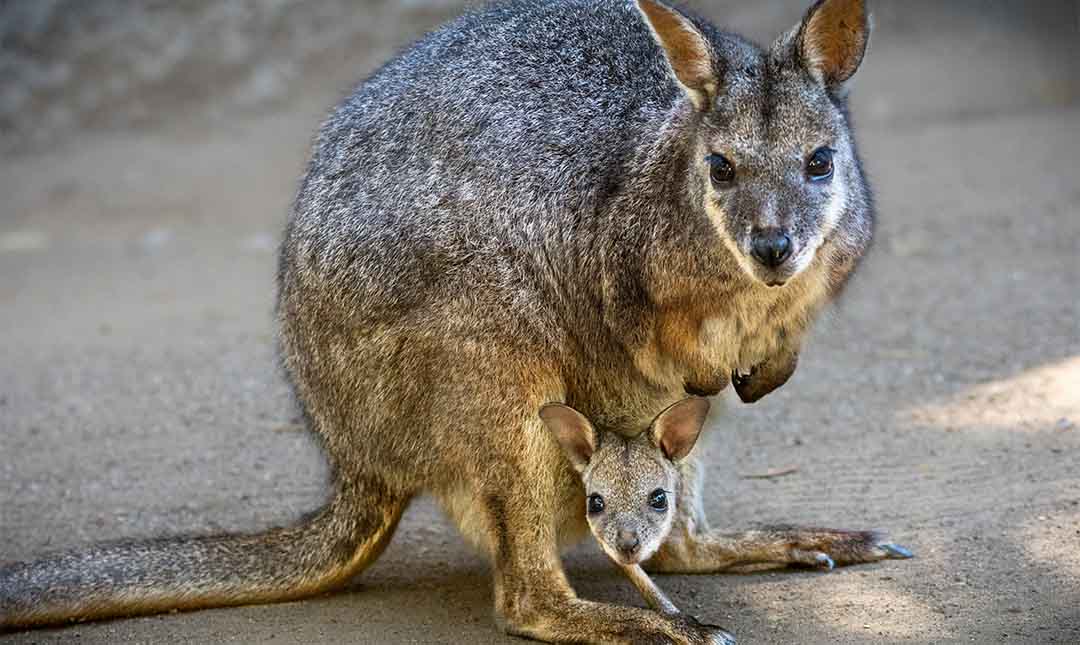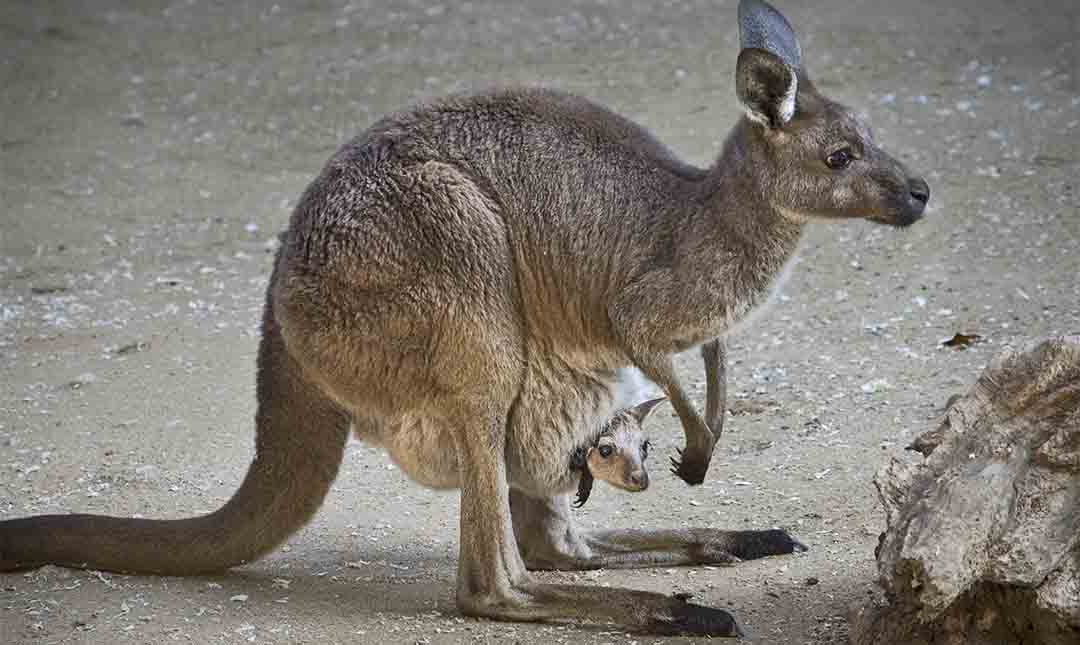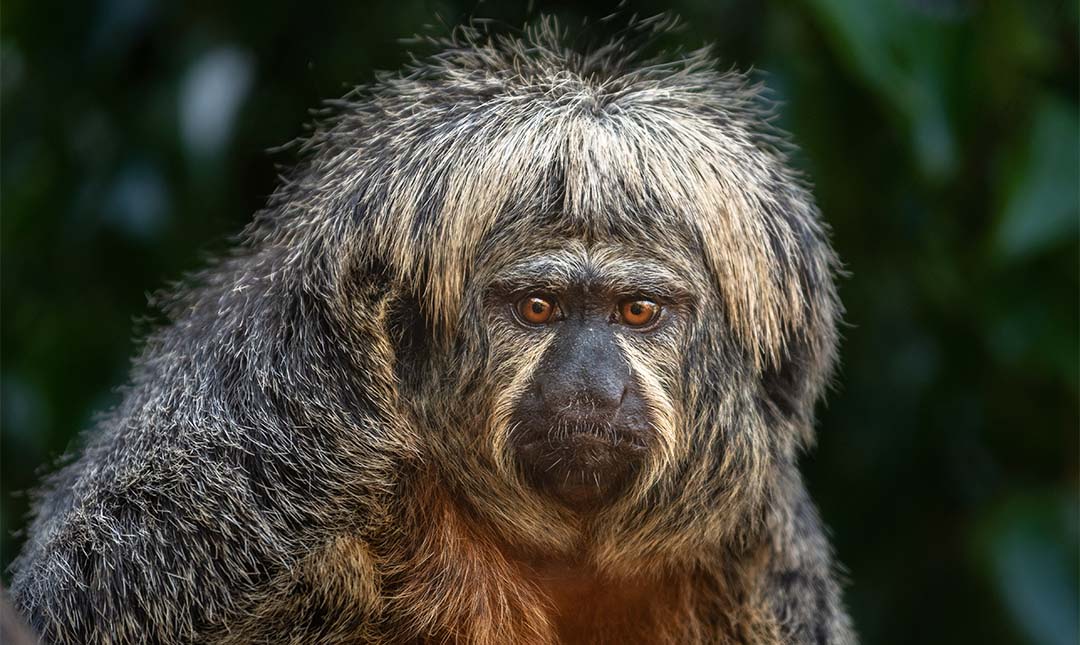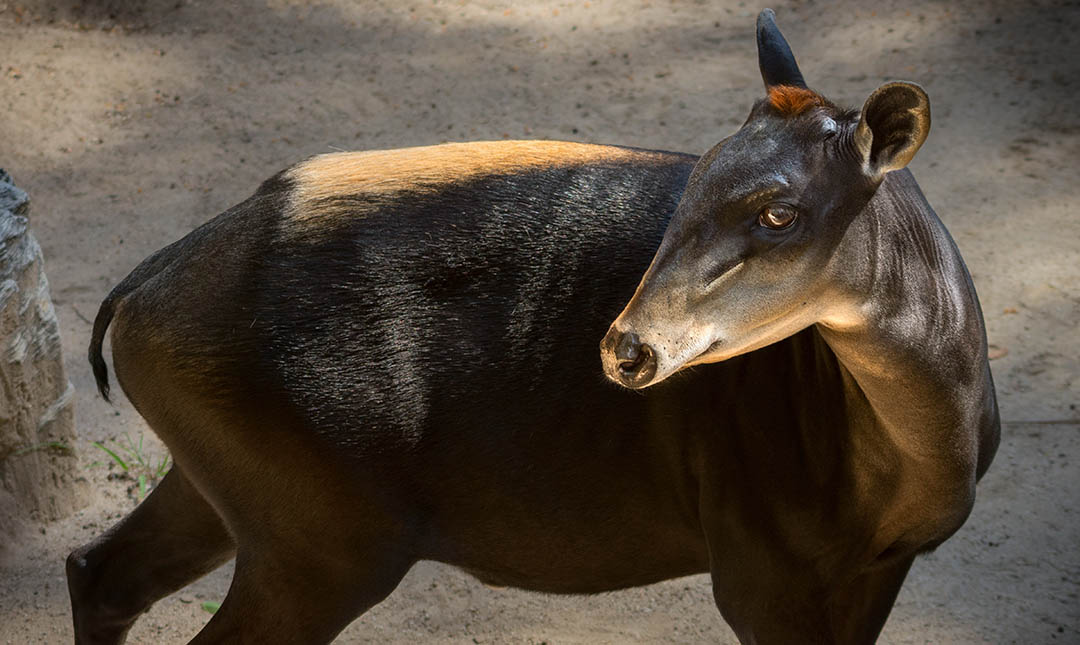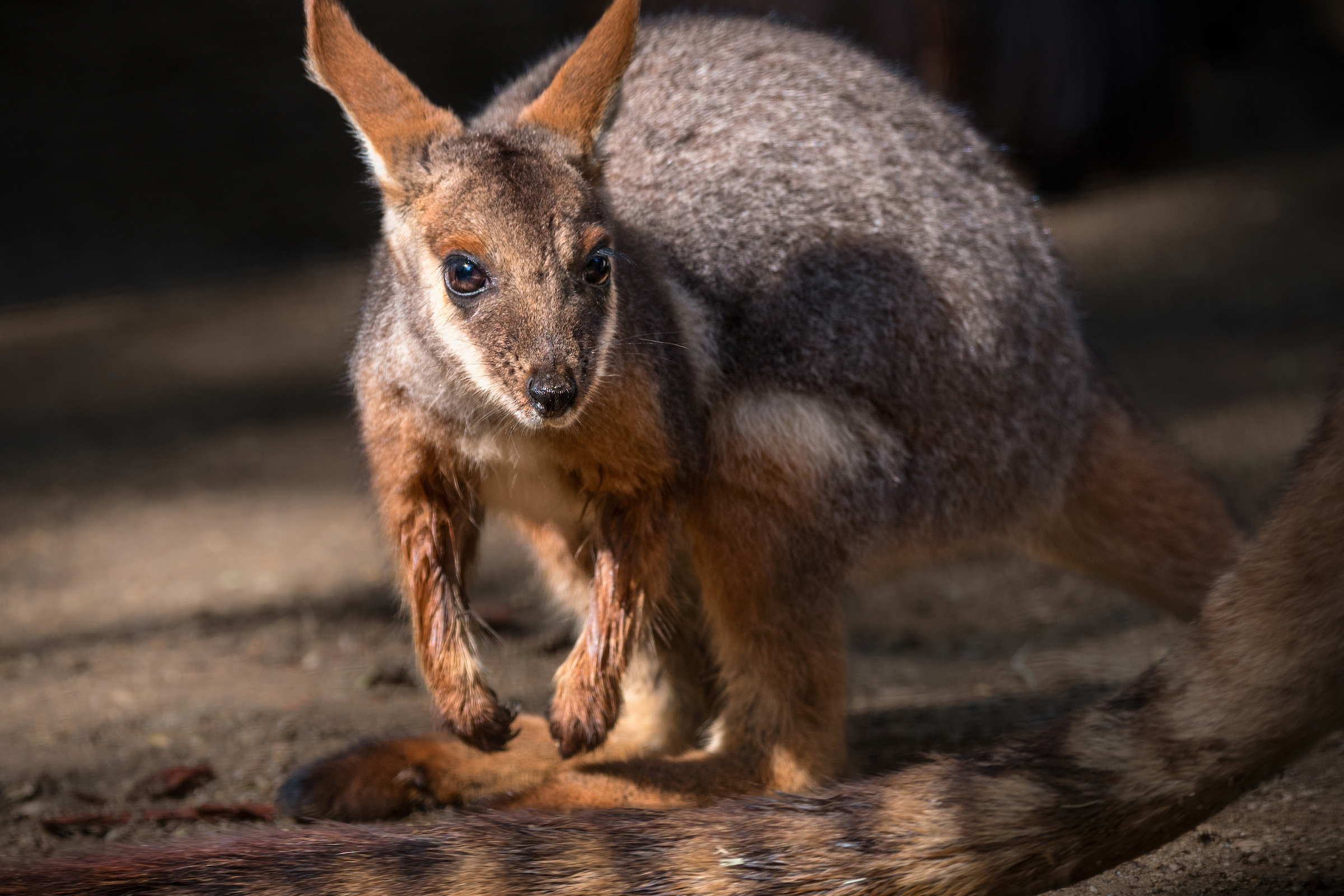Mammals
Mammals are warm-blooded vertebrates (animals with backbones) that nourish their young with milk. All mammals have hair at some stage of their life. Mammals have larger, more highly developed brains than other animals. There are more than 5,400 mammal species on earth.
Addax
Nomads of the Sahara Desert, addax live in one of the most inhospitable climates on earth.
African Painted Dog
Its scientific name means “painted wolf,” but this pack animal is neither a wolf nor a dog.
American Badger
These fierce predators are enthusiastic diggers who maintain large underground dens.
Asian Elephant
Asia’s largest land mammal is known for its intelligence and social behavior.
Babirusa
The babirusa is a wild, naked-looking pig that is native to the Indonesian archipelago.
Baird’s Tapir
The Baird’s tapir is the largest terrestrial mammal in Central America.
Bettong (a.k.a woylie)
Brush-tailed bettongs are named for the black tuft of fur on their prehensile tails.
Binturong
The binturong is also known as a “bearcat” though it is neither a bear nor a cat.
Black Duiker
Black duikers are medium-sized forest antelope native to Africa.
Black Howler Monkey
The black howler monkey is the loudest land animal in the world.
Black-and-White Colobus
Colobus monkeys live high in the trees, coming to the ground only occasionally.
Blue-Eyed Black Lemur
The blue-eyed black lemur is one of the most endangered primates in the world.
Bongo
Shy and elusive, mountain bongos are among the largest forest antelopes.
Bornean Orangutan
The world’s largest arboreal mammals, these apes spend about 90 percent of their time in trees.
Buff-Cheeked Gibbon
Gibbons are small apes from Southeast Asia. They are famous for their loud calls.
Calamian Deer
The Calamian deer is sometimes known as the hog deer because of its stout body and short legs.
California Sea Lion
These agile swimmers use their long front flippers propel them through the water.
Chacoan Peccary
Chacoan peccaries are social animals that live in small herds of up to ten individuals.
Chimpanzee
The Los Angeles Zoo is home to one of the largest chimpanzee troops of any zoo in the country.
Chinese Goral
Gorals can navigate and survive in harsh, rocky, high altitude environments.
Coquerel’s Sifaka
These leaping lemurs are found only on the island of Madagascar.
Crested Capuchin Monkey
These highly intelligent monkeys are adept at manipulating tools.
Desert Bighorn Sheep
The largest wild sheep in North America, bighorn are named for their majestic horns.
Fennec Fox
The fennec fox is one of the smallest and most social fox species.
François’ Langur
These leaf-eating monkeys live in forests in China, Vietnam, and Laos.
Geoffroy’s Spider Monkey
Dangling from a tree branch, these long-limbed monkeys resemble spiders dangling from a web.
Giant Anteater
The giant anteater’s long, sticky tongue allows this insectivore to slurp up ants and termites.
Giant Otter
As the name suggests, this is the world’s largest otter species.
Greater One-Horned Rhinoceros
Because of its singular horn, this rhino has been associated with the unicorns of legend.
Grevy’s Zebra
The stripe pattern of a Grevy’s zebra is as distinctive as human fingerprints.
Harbor Seal
Found off the coast of California, harbor seals are part of the true seal family.
Jaguar
The jaguar is the largest cat in the Americas and the world’s third largest cat.
Koala
Koalas are marsupials and belong to the same family as kangaroos and opossums.
Lowland Paca
Pacas are large rodents related to guinea pigs, capybaras, and agoutis.
Mandrill
Mandrills are the largest monkey species and one of the most colorful.
Maned Wolf
The maned wolf’s hind legs are slightly longer than its front legs, making it a talented uphill climber.
Masai Giraffe
Masai giraffes grow up to 18 feet tall, making them the lookout towers of the savannah.
Meerkat
Meerkats live in matriarchal groups of up to 30 individuals called mobs or gangs.
Mountain Tapir
Mountain tapirs live at high elevations, so their fur is thicker than that of other tapir species.
Nigerian Dwarf Goat
Nigerian dwarf goats are also known as pygmy goats due to their small size.
Ocelot
Ocelots rest in trees during the day and are nocturnal, hunting most of the night.
Okapi
The okapi is shy and secretive. Usually solitary, it follows a well-trodden network of trails.
Peninsular Pronghorn (Berrendo)
Pronghorn are the fastest living hooved mammal, able to cruise at up to 60 mph.
Red River Hog (a.k.a. Bush Pig)
Red river hogs are good swimmers and fast runners, active mostly at night.
Ring-Tailed Lemur
One of fifty different lemur species, ring-tailed lemurs use their tails to communicate.
Rock Hyrax
Though they are rodent-like in appearance, hyraxes are one of the elephant’s closest living relatives.
Sand Fox
Also known as Rüppell’s fox, the sand fox inhabits sandy deserts in northern Africa and parts of Asia.
Serval
Servals are elusive predators that belong to the small cat family, Felinae.
Shetland Sheep
Humans brought sheep to the Shetland Islands off the coast of Scotland more than 1,000 years ago.
Short-Nosed Echidna
These egg-laying mammals resemble porcupines or hedgehogs, but they are not related.
Siamang
Siamangs belong to a family of smaller apes called gibbons that are native to Southeast Asia.
Sichuan Takin
The takin belongs to a family of animals known as antilocaprids (goat-antelopes).
Snow Leopard
Snow leopards can jump 30 to 50 feet between mountain ledges, using their tails to balance
Southern Gerenuk
Gerenuks often stand on their hind legs when eating leaves from tall trees.
Southern Hairy-Nosed Wombat
Predators looking to make a meal of a wombat will find themselves up for a challenge.
Southern Pudu
The world’s smallest deer species, the pudu stands about two feet tall.
Speke’s Gazelle
This small, delicate antelope was named after the British explorer John Hanning Speke.
Sumatran Tiger
Tigers are the only big cats with stripes. These markings provide camouflage in dense cover.
Tadjik Markhor
These wild goats are expert mountain climbers, well suited to their Himalayan habitat.
Tammar Wallaby
Tammar wallabies are the smallest species of wallaby and are often preyed upon by dingoes.
Tufted Deer
Males tufted deer have small, unbranched antlers that are often hidden by a tuft of hair.
Visayan Warty Pig
The Visayan warty pig is one of the most endangered wild pig species.
Western Gray Kangaroo
Kangaroos can reach speeds of more than 30 mph for short periods and can jump as high as five feet.
Western Lowland Gorilla
Gorillas are the largest of the great apes. They are known as gentle giants.
White-Faced Saki
White-faced saki monkeys use their long, bushy tails for balance.
Yellow-Backed Duiker
The largest duiker, this species has a triangular yellow patch on its rump.
Yellow-Footed Rock Wallaby
These medium-sized marsupials are named for the golden fur on their feet.




